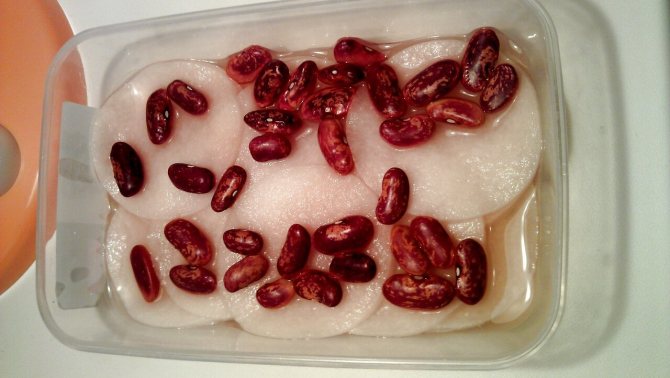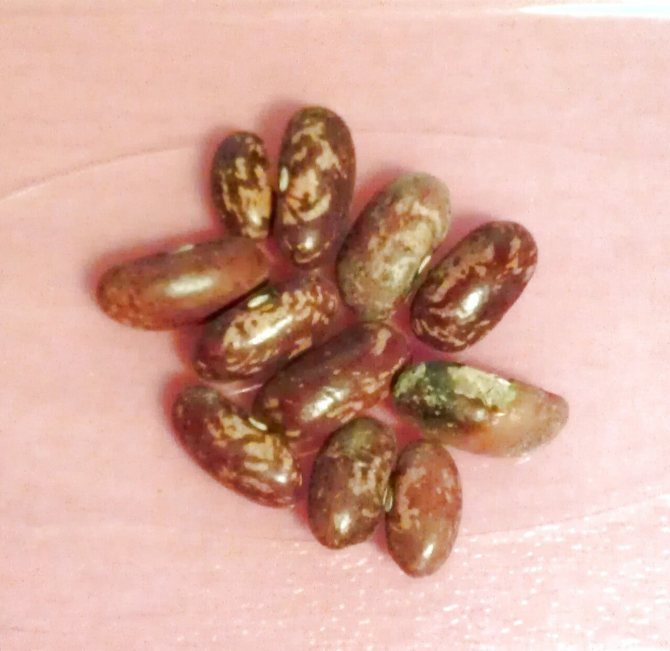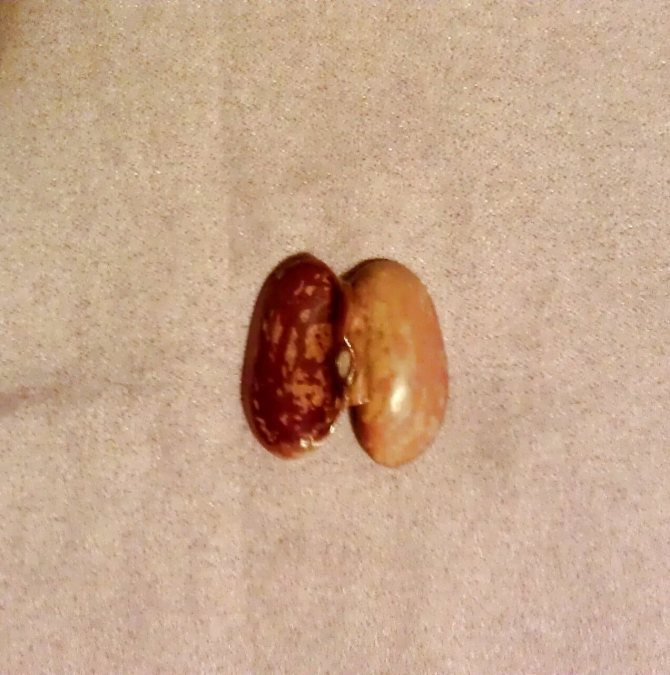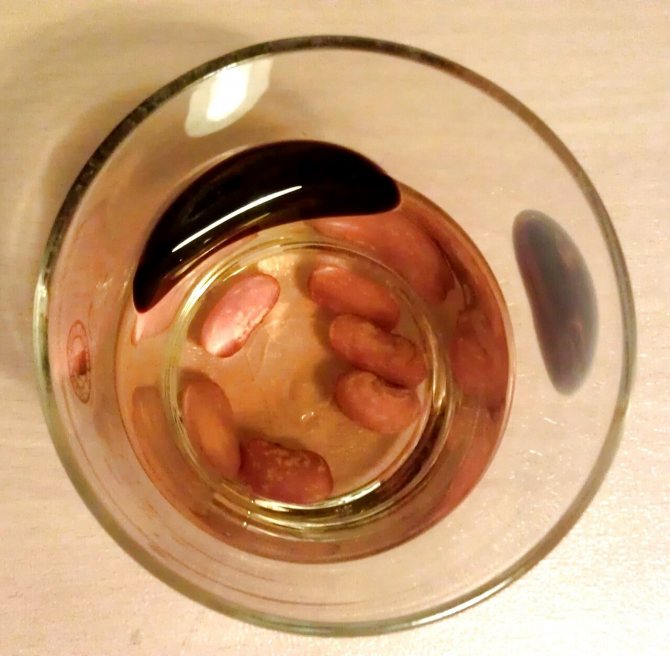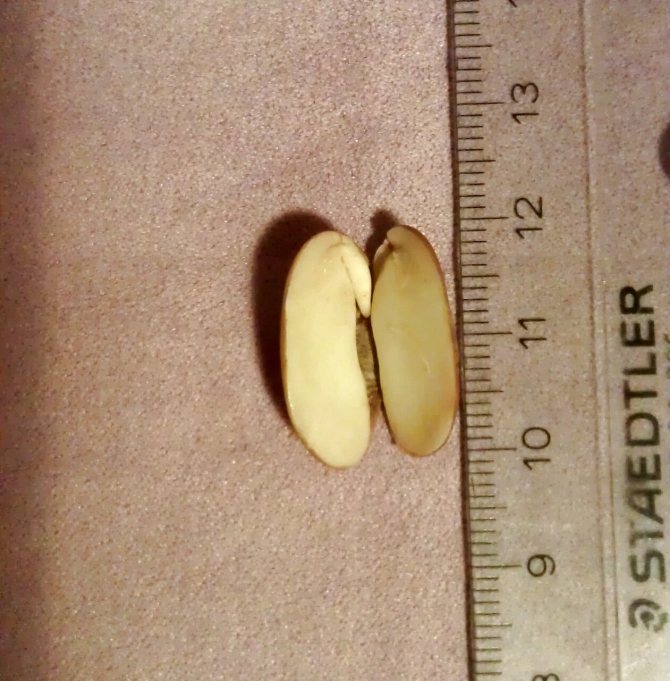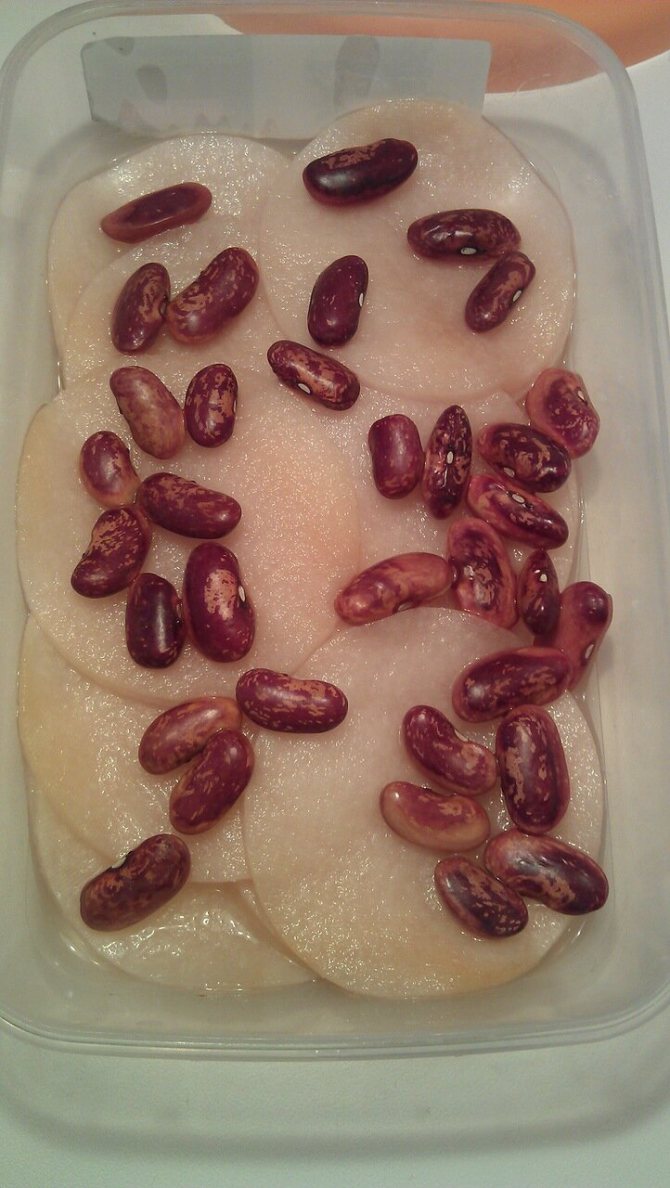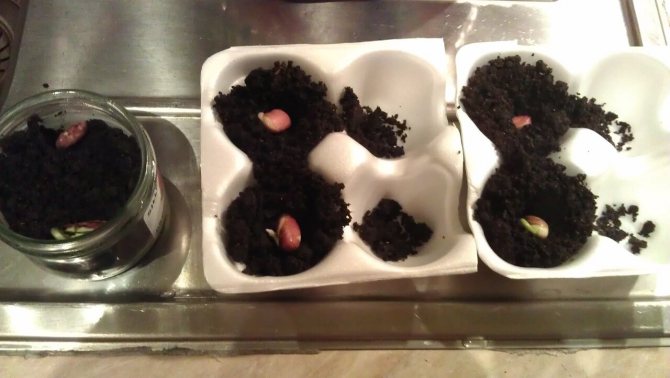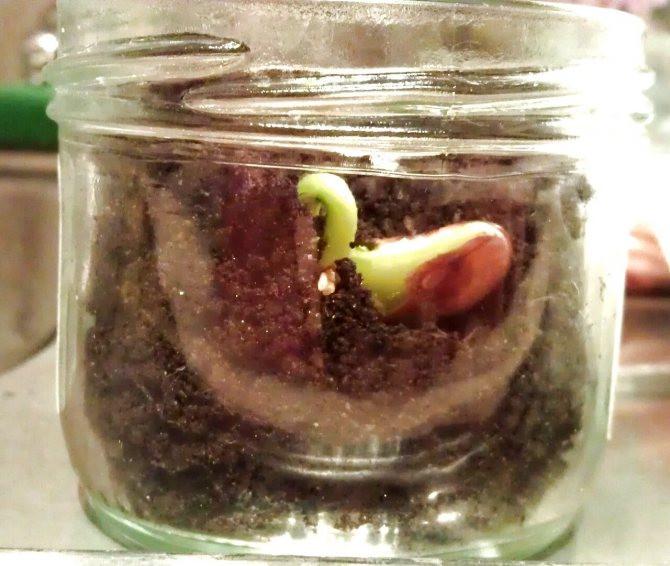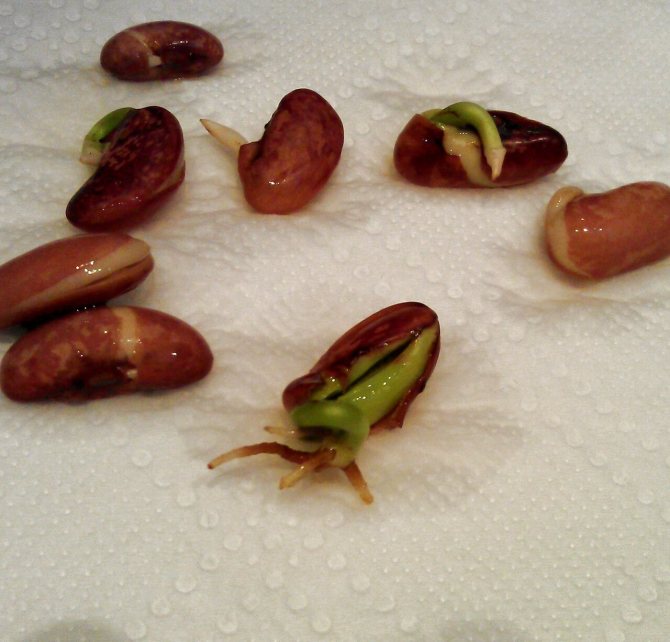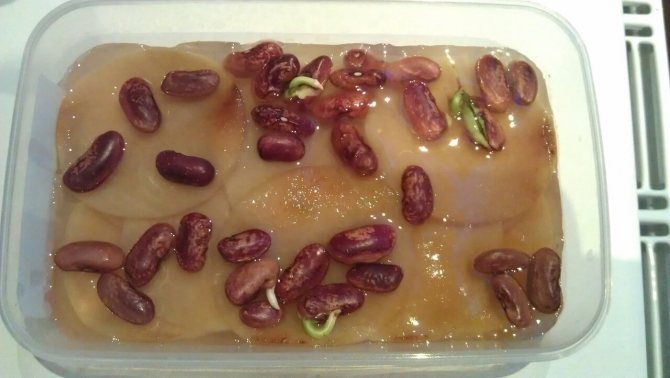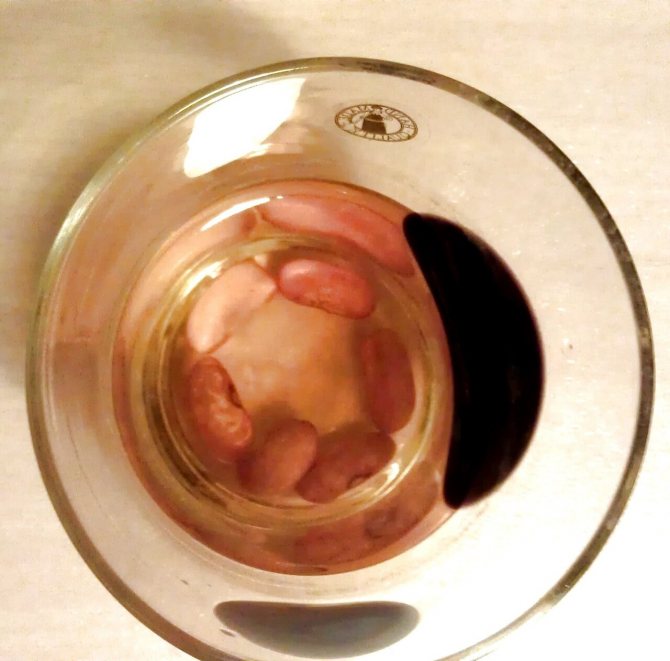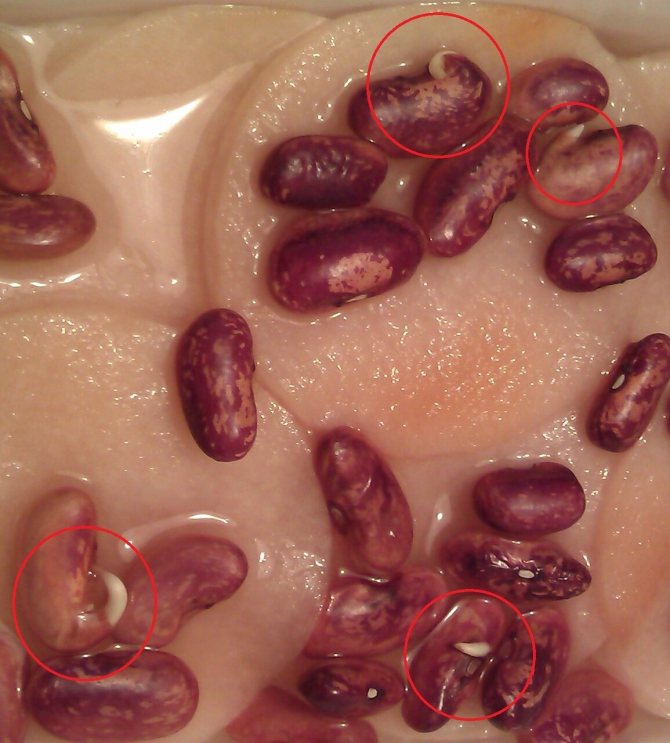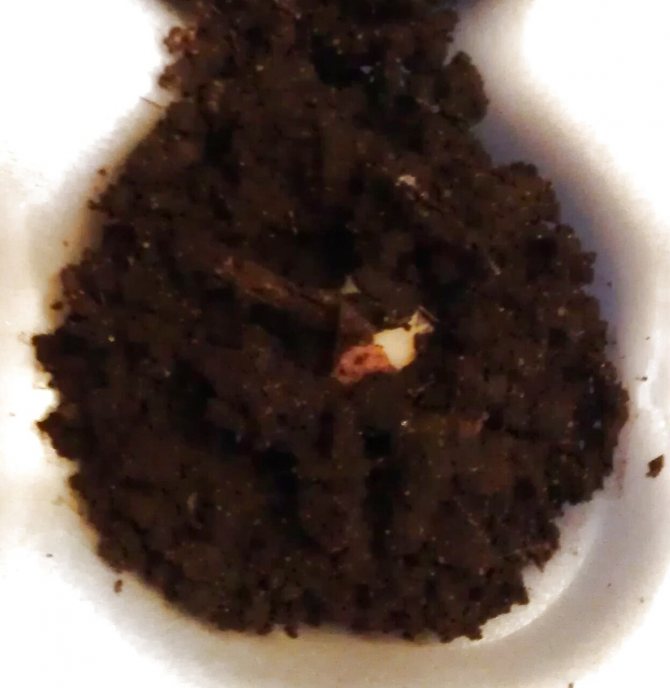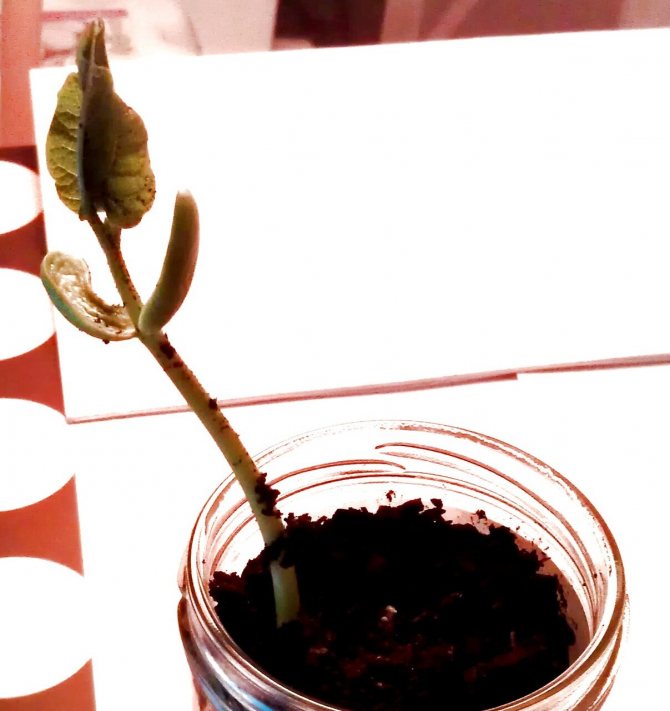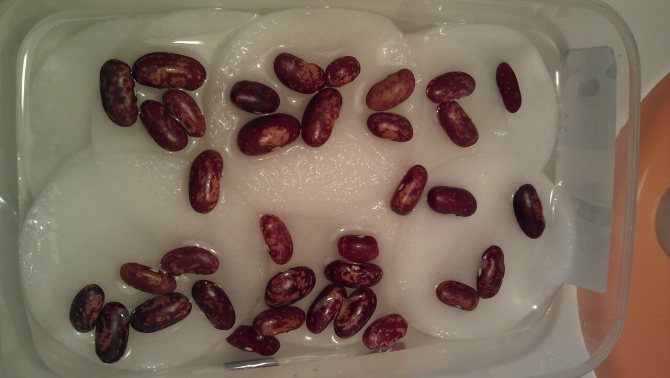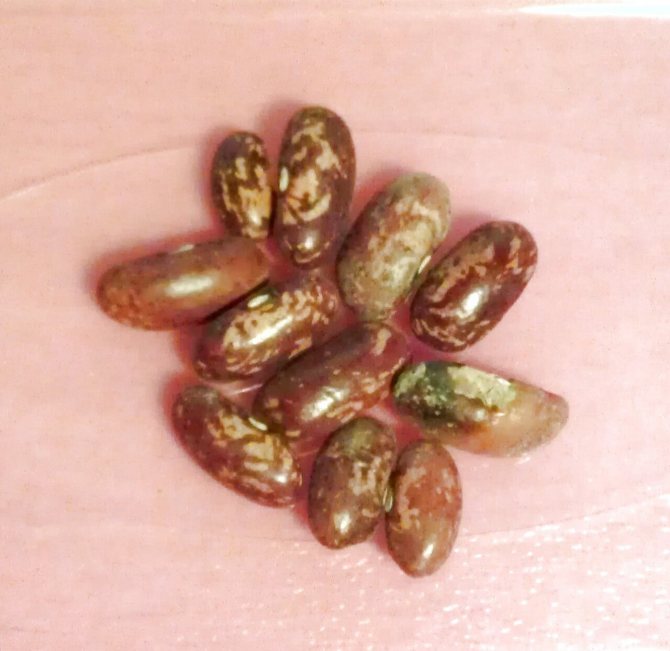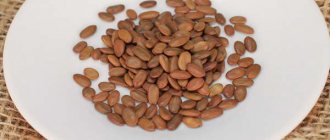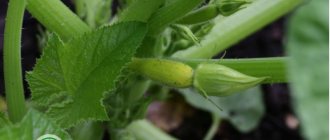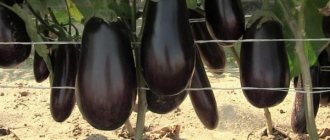Among the healthy vegetables, rich in vitamins and microelements and at the same time requiring no special care, the bean plant stands out. This type of agricultural crop is native to Central and South America. People have been eating it for seven thousand years. The variety of varieties is also striking, among which there are two main ones: curly and bush.
Since the plant is completely unpretentious and does not require constant attention, growing in the open ground and on the windowsill is possible even for a novice gardener.
Vegetable beans - a description of the garden culture
An annual herb belongs to the legume family. The average plant height is 60 cm. The stem forms lateral shoots, the roots with a pivotal structure penetrate to a depth of about 1 m. During the period of active ripening, the beans bear fruit in the form of pods with beans. The leaves of the plant are voluminous, deep green, oval in shape. When flowering, inflorescences of white, pink or purple are formed on the stems. The agricultural technology of beans depends on the cultivated variety and allows you to get pods with beans ranging in size from 6 to 15 cm.
Answers to frequently asked questions
Question number 1. What happens if you grow beans in acidic soil?
If a crop that prefers a neutral reaction is planted in acidic soil, then it will begin to hurt and yield will decrease. In such a land of beans, there are not enough nutrients, and some compounds are completely toxic to the culture.
Question number 2... What type of soil prevails in different regions of Russia?
In the Moscow region and the Moscow region, podzolic, loamy, clayey, soddy-podzolic soils and chernozems prevail. More than 70% of the area is occupied by sod-podzol, which need fertilization due to low fertility. In the Leningrad region, most of the soils are podzolic, which are also poor in fertilizers. As for the Volga region, here you can find various types of soils, mainly with a high humus content. In the Urals, loamy, podzolic, leached chernozems are more common.

In Siberia, most soil types are well-drained and moderately moist.
Question number 3... How to use sapropel to improve soil fertility?
The stores sell ready-made purified sapropel. It can be granular and free-flowing. Apply fertilizer according to the instructions. In its pure form, sapropel is used carefully, do not allow an excess of fertilizer. In pure form, they are applied per 1 sq. M. 4-7 kg, in the form of compost - from 2 to 4 kg. To prepare compost, take 1 kg of sapropel, 2 kg of manure, 10 g of superphosphate and 5 g of potassium salt.
Question number 4... How to find out the moisture content of the soil?
For this it is worth purchasing a tensiometer. The device shows soil moisture. Among the alternative methods, there is a gravimetric method with drying a soil sample in a thermostat for 8 hours. The difference in weight before and after indicates the moisture content. This method is rather laborious and is rarely used in practice.
Varieties and types of beans
There is a wide variety of types of beans, which differ in terms of ripening, growing characteristics and taste characteristics. To get a good and mature harvest, you need to choose varieties in accordance with the conditions where the sowing will be carried out.When planted in temperate climates, medium to late ripening varieties can be used. In regions with frequent precipitation, it is better to grow early maturing varieties that will give first fruits a couple of months after sowing.
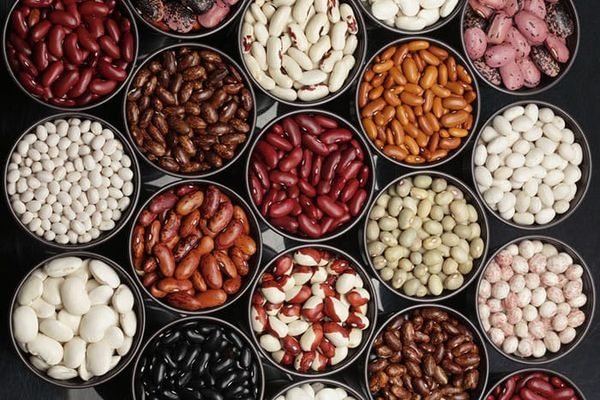

According to their taste, beans are subdivided into shelling, sugar and semi-sugar beans. The former are distinguished by the fact that their valves are not edible, but they are easy to clean after drying. The other two varieties can be used in cooking with the pods even when the beans are not fully ripe.
How to choose the right variety of beans for your home
If you decide to plant beans at home, first you need to decide on the choice of the variety. There are several options, the best of which are the asparagus and ornamental varieties. Bush beans are also noteworthy due to their short growing season, fast ripening and compact size. The characteristics of early bush varieties allow them to be grown in boxes without much hassle. Scuba and Home Garden are popular. For home cultivation, hybrids are recommended that have immunity against diseases and insect pests. Decorative species give out large and beautiful multi-colored beans, which are unsuitable for food, but are used for further landscaping of balconies.
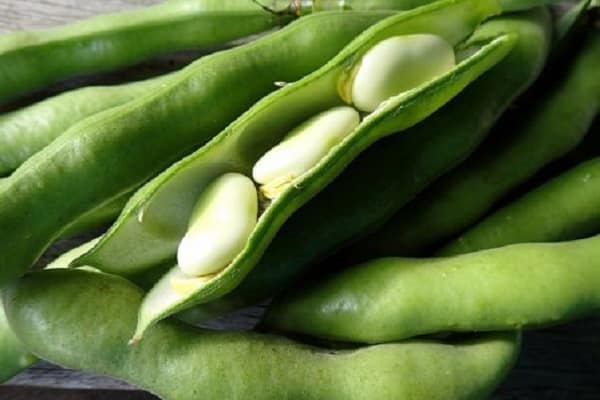

The early ripening asparagus beans are distinguished by excellent fruiting in the apartment:
- The oil king. Delicate, tubular, large pods are removed no earlier than two months later and used for food fresh or as a component of blanks;
- Caramel. A variety with increased resistance to legume diseases. Produces a harvest of sugar pods in two months;
- Saks 615. A compact variety with small, tubular pods, prized for its high nutrient content and lack of coarse fibers.
When preference is given to a curly look, you should not choose too climbing varieties that shade the windows as much as possible. You can advise Dotted, Rumba, Violetta. Pinching is capable of stopping the growth of a vine, which will bring the moment of the beginning of fruiting closer. Climbing plants are fixed on a trellis or cone-shaped wooden tripod. It is enough for Kustov to install a low support.


Peeling varieties are planted in order to obtain dry grains, home conditions are not suitable for this - what they sowed is what they harvested.
For those who first decided to plant beans at home, it is best to purchase several varieties for testing and plant 3-4 seeds each.


How to process beans before sowing
Correct planting of beans requires preliminary preparation of seeds before planting. The seed needs to be warmed up, it is better to do it naturally. To do this, it is enough to leave the seeds in the open air at a temperature of about 30 degrees.
If weather conditions do not allow heating, an electric dryer can be used.
After that, the seeds must be soaked in warm water for 24 hours.


How to grow beans?
It is possible to grow beans both by means of seedlings, transplanting them from greenhouse conditions into open ground, and by seeds, sowing them directly to the garden bed. There are also non-standard ways of cultivating legumes that do not use soil. The most interesting and effective solutions are described in our article. They can be implemented if desired. The main thing is to strictly follow the recommendations, and then you will be able to quickly grow beans even in an apartment, which is the best fit for gardeners of the Moscow region, as well as the Urals, Siberia and other regions of the country with a similar climate.
In the open field
Before growing beans in the open field, you must first warm up the seeds to improve their germination. To do this, the beans are kept under the sun or a heat lamp for five days.
If the seeds were stored in a warm room, where the temperature did not drop below twenty-five degrees, then they do not need pre-heating.
To speed up the emergence of shoots and help the sprout to break through the seed skin faster, it is advisable to soak the planting material in warm water for one to two days before planting. This will soften the peel, and the young greens will appear much faster.
In the open field, you can grow beans both from store seeds in a package, and from those collected with your own hands. The best time for this is mid-April and the first half of May.
The phased planting process is as follows.
- A few weeks before sowing, it is advisable to enrich the soil on the site with useful microelements by mixing it with mineral fertilizers. Nitrate and superphosphate are great.
- Seeds should be prepared in advance by warming them up and keeping them in water for about a day.
- The beds need to be dug up properly, and then longitudinal grooves should be made in the ground, keeping a distance of 25-30 centimeters between them.
- After the holes have been dug, they must be poured abundantly with water and allowed to soak.
- Then you can start spreading the seeds. You need to put two or three beans in each hole, deepening them three centimeters into the ground. There should be about five to six centimeters between the beans. In the event that curly beans are planted, care must be taken to ensure that they have a support in the form of stakes or a special net.
- After planting, the beans are covered with earth and the beds are leveled with a rake.
- Finally, the area is watered again.
After that, it remains to wait for the first shoots. It is important not to forget to constantly moisturize the soil, as any variety of beans loves moisture. When asked when is the best time to plant this crop, it should be noted that it depends on the geographic location. On average, the end of April - early May is best suited, but in the northern regions, it is better to shift the planting date of beans to the end of May - early June.
On the balcony
Growing beans on the balcony is suitable for those who do not have a summer cottage or garden. Best suited for cultivation at home are asparagus or green beans, which can be of two types - curly and bush. Of course, it is better to choose the second option, since in this case you will not have to figure out where to install special grids. In addition, bush beans will bear fruit much faster.
Since this crop has a rather weak root system that cannot grow very much, beans can be grown in pots or seedling boxes.
This is done as follows:
- For a start, it's best to germinate the seeds. To do this, you need to put them in a gauze bag, dip it into a deep plate and fill it with water. In this position, you need to keep the beans until the sprout begins to pierce the skin from the inside.
- Next, you need to pick up a pot for seedlings. Containers with a volume of 2 liters are best suited. For curly bean varieties, it is better to take larger pots - from 15 to 35 liters.
- After that, it is necessary to prepare the soil and fill the selected containers with it a little more than half.
- It is necessary to plant seeds in the soil so that the distance between them is at least ten centimeters.
- After planting, the soil must be watered, but not overfilled. Further watering should be carried out when the soil begins to dry out.
It is necessary to stop watering the moment the plant releases the second pair of leaves. But when the beans begin to bloom, the regularity of watering must be restored. You should also make sure that the balcony is always light and warm. In low light conditions, it is recommended to use special fluorescent lamps.
In cotton wool
An interesting way to grow beans is by using cotton wool in front of the soil.We recommend that you pay attention to the step-by-step instructions for sprouting beans before planting in pots.
- The first step is to select high-quality planting material. The beans should be carefully inspected for rot or damage. Beans that do not meet the requirements must be removed immediately.
- Next, you need to take a shallow, wide container and cover it with a thin layer of cotton wool, then add a little water so that the cotton wool is not completely flooded with it, but remains as moist as possible.
- Put the beans on a cotton wool layer and leave the container in a warm, bright place for six to seven days.
- After the specified amount of time, the first shoots will appear. When the roots become visible, you can repot the beans in pots with soil.
Further steps are similar to the standard planting of beans in pots for growing on the balcony.
Bean predecessors
For active and proper growth of the culture, it is recommended to choose potatoes, pumpkin, cabbage and various root varieties as precursors for beans. You should not sow beans after growing sunflowers, as the soil will be clogged with carrion and there is a risk of destruction of plants by gray and white rot.
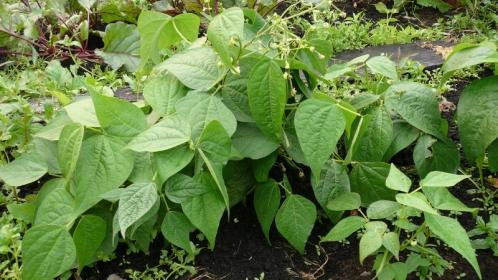

Secondary crops should not be placed in the same place, since the next year the likelihood of developing diseases significantly increases. Re-planting beans on the site can be no earlier than after 5 years. The legumes themselves are good predecessors for any crops, provided that the rules of agricultural technology are followed. Plants saturate the soil with nitrogen and leave the soil cleared of weeds after harvesting.
Mr. Dachnik informs: correct harvesting of beans
Beans for shelling are harvested after the beans have hardened, when the pods have a yellowish color. Usually, the pods are plucked from a torn, drying plant. The beans are dried, then peeled, scattered for storage in canvas bags. The collection of planting material is carried out in a similar way.
The asparagus pods are harvested in a special way. They reach commercial maturity 7–10 days after setting the ovule. The size of a pod is no larger than the diameter of a grain of barley. In a dry summer, all fruits reach the required size in a couple of weeks, new flower stalks do not form at high temperatures, and pollen is sterilized. With cool nights, regular watering, the harvest is extended until the end of summer. The pods must be cut every 4–6 days to keep the plant in bloom.
All curves, defective pods are removed so that the beans do not waste energy on them. Cutting is done in the morning or evening hours, when the air temperature is low. At + 20 ° C, the nutritional properties of beans and valves are quickly lost, they try to quickly cool or freeze finished products for long-term storage. Raw beans are not consumed, the glycoside fazin, which is dangerous for the digestive tract, is destroyed when heated to + 80 ° C, they are boiled for 30-40 minutes.
Soil requirements for planting
The soil for sowing legumes must have a normal alkaline reaction. Soil with high acidity can lead to stunted growth and reduced yields. Dolomite flour or wood ash dusting helps to reduce the acidity of the earth. If before planting it is not possible to measure the acidity level, it is worth adding ash to the hole just in case for better germination.


Sandy and heavy clay areas are not suitable for growing crops. The soil should be light, fertile and moderately drained. Before direct planting, you need to clear the land of weeds and remnants of previous plants.
Soil preparation for planting seeds
The rapid growth of beans allows you to grow the plant without picking, in a constant container. Each plant will need at least 3 liters of soil. Pots should be 20 cm tall due to poor root development.The tight container will make the beans weak and lean.
If it is not possible to equip the containers with drainage holes, a layer of expanded clay is poured onto the bottom. You can purchase a universal ready-made soil or prepare the soil mixture yourself. To do this, take in equal amounts of humus and sod land, where 200 g of wood ash is added. The use of acidic soil is unacceptable. Deoxidation is carried out with dolomite flour, ash, chalk or lime to pH 6-6.5.


Illumination
All varieties of beans are plants that require intense lighting. For ripening, the length of the daylight period is not more than 10-12 hours.
When starting sowing, it is better to know in advance about the upcoming daylight hours in the forecast.
With good lighting conditions, the plants will quickly move to the fruiting stage and form a large harvest. In areas with a longer daylight hours than the plant requires, seeds are planted in the second half of summer or the beds are covered with opaque frames with a covering material.
See also the Description of the Vigna beans variety, cultivation features and yieldRead


It is important to observe strict requirements for the illumination of the beds only at the beginning of the development of seedlings. With further growth, the beans continue to develop and bear fruit with less dependence on light. In addition, breeders have bred several varieties that are immune to the length of daylight hours.
Which beans are best to grow at home
Before you learn how to grow beans, you need to choose the appropriate variety, with descriptions and photographs of which you will familiarize yourself with in this section.
Variety selection
The ideal solution for planting on a glazed loggia is a sugar or asparagus bush crop.
The following varieties are popular:
- Caramel. Asparagus beans produce sugar-flavored pods just two months after germination and are resistant to all diseases. The plant reaches a height of 45-60 cm.
- Shahinya. Ripe white fruits have increased sugar content. 70-80 days pass from germination to ripening. Plants are resistant to disease and heat. Bushes grow to a length of 28-30 cm.
- The oil king. The compact plant reaches a height of 40 cm, and the period from germination to fruiting is 50 days on average. The asparagus culture is resistant to diseases, tolerates the lack of regular watering.
- Belozernaya 361. Bush plant, 35-40 cm high. The growing season (from the stage of growth to development) is 50-54 days. The beans are fleshy and yellow in color.
- Backyard. Plants with branched stems, 40-50 cm high. Green beans with excellent taste.
Important! When planting at home, you should give preference to bush beans, since the variety is early ripening, fruitful and, unlike the climbing one, will not shade other seedlings. Also, the blossoming lash-loaches fill the empty space on the territory of the balcony.
Gardeners who decide to grow beans at home for the first time are recommended to purchase more than two varieties and sow 2-3 seeds each. So you will learn in practice which of the planted types will take root better and give a greater yield.
Hulled beans are not planted indoors., it is desirable to give preference to asparagus culture. The reasons for this are the long growing season (an average of three months) and the lack of a serious grain harvest that pays for the efforts in cramped conditions.
How to plant beans in the country - a description of the planting process
Knowing how to plant beans seeds correctly, it will be possible to create suitable conditions for active vegetation. The most acceptable and common option for planting beans is an ordinary scheme. Seeds should be planted to a depth of about 5 cm every 20-25 cm.The optimal row spacing is 30-40 cm.
For planting, you need to carefully dig holes and place several seeds in each.
Immediately after sowing, the soil is watered and compacted. To accelerate germination, the soil can be covered with a protective film or non-woven fibrous material.
How to care for the soil for growing beans
They have been taking care of the area set aside for planting beans since the fall. For the winter, it is advisable to disinfect the soil. The dug up earth is disinfected with a solution of potassium permanganate. Prepare a 0.05% solution. For 1 sq. M. make up to 50 ml of the product. Compost, humus, wood ash and vermicompost are introduced in the spring. They feed the crop in June. Complex mineral fertilizers are applied at a rate of 40 g / m. sq.
If the summer is dry, then at the end of June or July, the culture is poured with a solution of chicken manure. After 20 days, wood ash (100 g per culture), vermicompost or sapropel are introduced at the budding stage. Sapropel application rate is 3-7 kg / m3. sq. Read also the article: → "How to use sapropel as a fertilizer?"
Landing dates
You can sow beans at any time from early spring to early August. As a rule, planting of beans begins simultaneously with the massive flowering of chestnuts. In southern regions, legumes can be grown as a re-crop after harvesting previously planted vegetables.
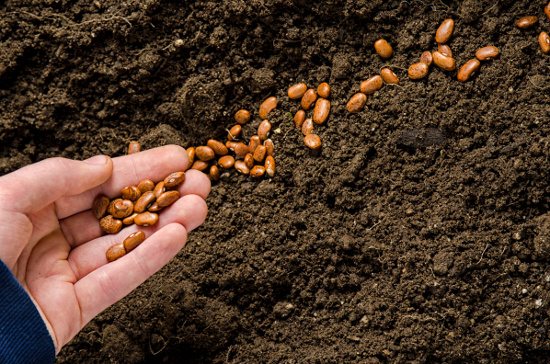

Multiple sowing at intervals of 10-12 days allows you to harvest fresh crops for a long time. It is enough to set aside a small bed and periodically pluck the pods before direct cooking.
Planting stages
Indoors - balconies, loggias - it is recommended to plant beans at the very beginning of May. The technology of growing in an apartment differs in terms of time: they start planting in March. A step-by-step scheme for planting this vegetable crop is proposed.


Stage 1
Seeds are allowed to be planted in the ground dry or already germinated. In the case of choosing the second option, the seed is placed in a gauze bag and lowered into a container with warm water, which should be added as it evaporates. The first sprouts will indicate the right time to plant the beans.


Stage 2
We start choosing a container for planting plants: bush varieties need a volume of soil of at least 3 liters, curly ones - 35 liters. Having picked up a suitable box, container or pot, we fill it with soil mixture, the preparation of which was mentioned above.
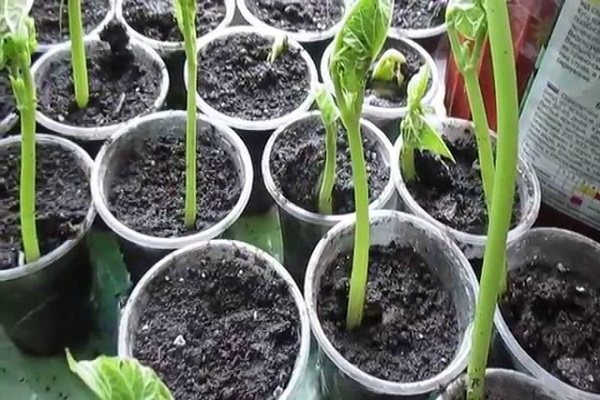

Stage 3: Disembarkation
At this stage, there are no problems, it is enough to follow simple rules:
- Before planting dry or soaked seeds, it is recommended to spill the soil with hot water or manganese solution. The beans are laid out in the pits, maintaining a distance of 10 cm. Sprouted seeds are recommended to be laid on their side, regardless of the location of the sprout, otherwise it is difficult to determine the correct location of the grain. However, nothing terrible will happen if the placement is incorrect, since the seedlings hatch in any case, rushing towards the light.
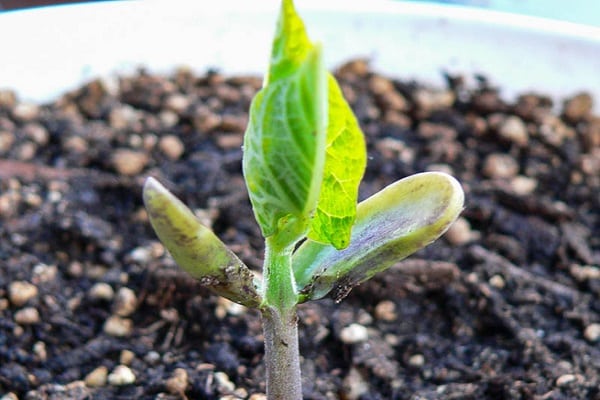

The optimal planting time is May. The beans germinate already on the 5-7th day, begin to bloom in a month and a half, and the first harvest should be expected after a few weeks.
Combined cultivation is considered a good option:
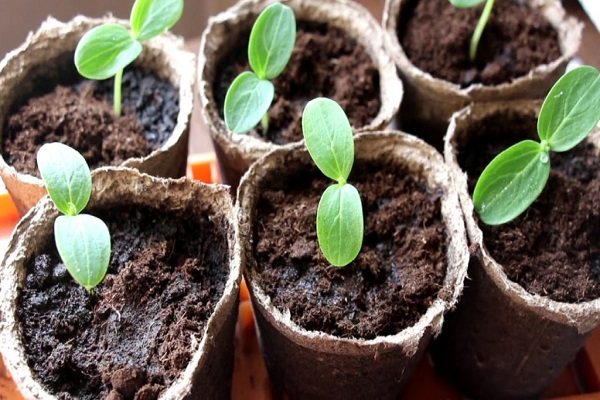

- Seedlings grown indoors are taken out to a balcony or loggia with the establishment of warm weather. Sowing is carried out one month before the disappearance of the threat of night frosts.
- Early ripening varieties, sown in February, are grown on a windowsill until fruiting. After harvesting, the containers are emptied and placed on the balcony for planting new plants.
See also
How to sprout beans quickly and correctly at home in 1 dayRead


Planting process
Having prepared the seeds, you need to dig holes in the beds, observing spatial isolation, and apply fertilizers to them. Several seeds are poured into each groove, and after the formation of the first leaves on the seedlings, only 3 seedlings are left. The rest of the seedlings can be carefully transplanted or removed.
The nuances of planting beans seeds depend on the soil and other conditions in which the plant is grown.
For example, when using the seedling method, sprouted beans are transplanted into the ground according to a scheme that differs from simple sowing.
In the open field
Most often, beans in summer cottages are grown in beds, so before sowing, you should familiarize yourself with when to plant plants in open ground. The culture does not tolerate low temperatures, therefore, sowing in open soil is carried out when the upper layers warm up to + 12 ... + 14 degrees. It is also important that the risk of late spring frosts is passed.


It is best to grow legumes away from tall trees and shrubs that can block natural light. In addition to shading, it is worth avoiding areas where there is a possibility of through wind.
In the greenhouse
If environmental conditions do not allow growing legumes in the beds, you can plant the seeds in a greenhouse. Planted plants can produce early and late harvests when planted at intervals of 1–2 weeks. The best variety for planting in a greenhouse is considered to be a bush, which takes up a lot of space, but at the same time gives a high and stable yield.


In outskirts of Moscow
Climatic and soil conditions on the territory of the Moscow region allow planting mainly low-growing bush varieties. Sowing and cultivation are carried out in open ground in mid-May. Adhering to the instructions of the lunar calendar, it is better to start sowing during the waxing moon phase.
The beds in the Moscow region are prepared in the fall by digging under a shovel bayonet and applying phosphorus-potassium dressing. At the beginning of spring, the soil is loosened and treated with nitrogen fertilizer.
In Siberia and the Urals
The cultivation of beans in Siberia and the Urals presupposes compliance with a number of rules. Most varieties of crops do not take root in regions with short summers, so it is important to know how to grow plants for a large harvest.


In particular, the following recommendations should be considered:
- Due to the short season, it is better to select early maturing varieties.
- Seeds are best planted dry, without presoaking.
- Curly varieties need to be tied up, as frequent precipitation can knock down the sprouts.
- When a cold snap sets in, it is better to cover the plants with a film material.
How to determine the soil type for beans?
Because beans prefer moist, fertile soils with neutral acidity, it is important to determine the soil type before planting the crop. If the soil is not suitable, the yield of beans decreases, and the plant develops slowly.
There are three types of soil:
- Light (sandy and sandy loam). The earth, if you pick it up in the palm of your hand and squeeze it, crumbles. It does not retain moisture and nutrients well. For beans, this is not the best option, but this soil allows air to pass through well. To make it suitable for beans, namely to increase the moisture content and make it heavier, clay or sapropel is added.
- Loamy. This type of soil is most suitable for beans. The land is moderately moist, dense and fertile.
- Heavy (clayey). If you pick up such earth in the palm of your hand and squeeze it, it keeps its shape well. Such soil is moist, but due to its high density, organic fertilizers decompose slowly, therefore, there is a deficiency of nutrients. The ground takes a long time to warm up and it is better to plant beans in seedlings in mid-May. To improve the soil for growing beans, sawdust and sand are added. Sawdust is applied only in autumn, pre-soaked in a solution of nitrogen fertilizers.
Tip # 2. Before using sapropel, the fertilizer must be ventilated and frozen to kill all harmful compounds. An alternative is a commercially available sapropel, which is used without prior preparation.
To loosen heavy soils for sowing beans, the site is sown with green manure.Choose cereals that have a strong root system.
Features of growing in the country
When growing beans in a summer cottage, the planting technology is standard, but at the same time there are several features for care. The seeds are preheated and soaked, due to which they quickly germinate. For thick cotyledons to swell, an abundance of moisture is needed, and insufficient watering can lead to stunted growth.


The longer the shift lasts in the soil, the higher the risk of pest infestation. Presowing soaking activates the seedling formation process and shortens the overall growing period.
Common mistakes gardeners make when preparing soil for beans
We offer mistakes that significantly affect the quality of the beans crop:
- To increase the fertility of light soils, peat is introduced, but it is not advisable to use it for beans, because the acidity increases. Better to use humus or compost.
- If in the fall or spring you deacidify the soil with lime or dolomite flour, superphosphate, urea, ammonium nitrate or ammonium sulfate should never be used.
- The level of nitrogen fertilizers applied to the soil should be controlled, otherwise the fertility of the beans will be reduced.
Rate the quality of the article. We want to be better for you:
Black Eyed Peas
Asparagus bean seeds can be grown both outdoors and at home. It is better to plant low-growing varieties in a separate container or in peat pots for further transplantation.
Green beans do not require additional lighting, it is enough to provide sunlight.
The soil for the asparagus variety should be two-thirds earth and one humus. As a top dressing, you can use a complex fertilizer with phosphorus and potassium.
See also the benefits and harms of beans, use and contraindicationsRead


Is it possible to create conditions at home suitable for beans
The plant needs a short daylight hours - no more than 12 hours, this is necessary for the formation of flower buds. If it is possible to provide beans grown on the windowsill, such conditions, the harvest will be early and abundant. The same applies to planting culture on the balcony. This parameter loses its relevance with the onset of fruiting.
To grow beans in an apartment, prepare loamy or sandy loam soil and warm it up to +12 degrees. Breeding beans at home will not cause problems, in particular, thanks to the self-pollinating flowers.
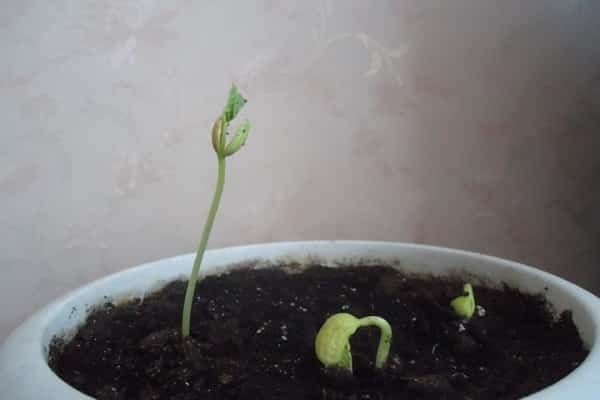

Bush beans
Since bush beans are thermophilic plants, it is important to adhere to late planting dates. When sowing, the soil temperature should be above 14 degrees to avoid seed death. The optimal time for planting bush varieties is the first decade of May. The depth of planting seeds is no more than two centimeters. After planting, cover material should be left on the ground to accelerate germination.
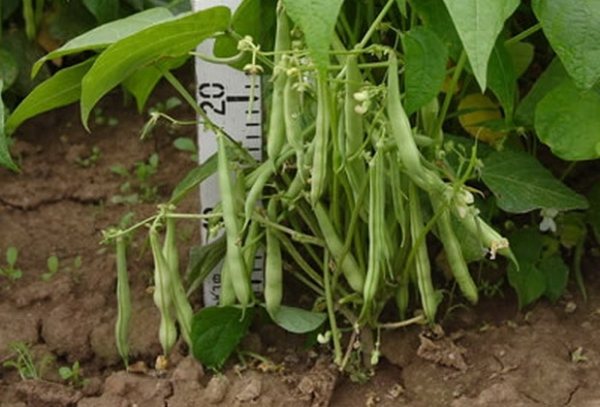

Description of beans
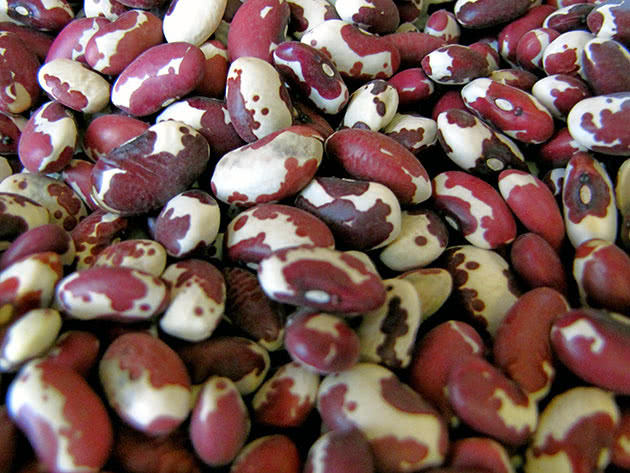

Beans contain a large amount of nutritional components for humans: vitamins, proteins, minerals, fats, fiber, amino acids, carbohydrates. Beans are divided into 3 types: curly, semi-climbing, bush. In curly legumes, the stem length can reach 4-5 m, semi-climbing plants stretch up to 1-1.5 m. Bushes grow 30-70 cm tall.
Beans bloom beautifully, and they are often grown to decorate a summer cottage; they braid fences, arches, columns, creating colored compositions. The beans have large bright green leaves, flowers of different shades of moth-shaped. The color of flowers is white, red, black, purple. Inflorescences consist of 2-6 brushes. The size of the pods depends on the selected variety, the length is from 5 to 25 cm.
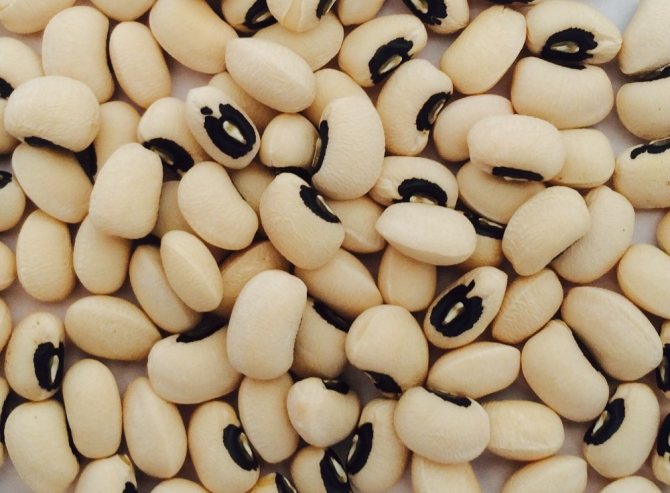

You may be interested in:
Beans variety "Black eye": description and characteristics A variety of beans called Read more ...
The beans are divided by:
- grain - only fruits are suitable for eating, pods are not suitable for food;
- vegetable (asparagus) - the whole pod is edible, the pods are soft, sweet, they are eaten raw;
- semi-sugar - the pods are used when they are not ripe, the ripe shutters are hard;
Beans love warmth and light. Beans germinate at temperatures over 10 degrees. In terms of ripening, legumes are early ripening, mid-ripening and late-ripening. For growing beans on the windowsill, beans with an early ripening period are mainly used.
Interesting!
Asparagus beans have a low calorie content - 41 kcal per 100 g.
Caring for beans in the garden
Beans need aeration, so the soil under the seedlings should always be loose and free of weeds. Caring for beans involves the first loosening when the plant reaches 6-7 cm, the second - together with hilling after 2 weeks. Final loosening is carried out before closing the rows.


With abundant growth of the bushes, it is allowed to cut off part of the leaves. With a thickened planting, you can separate several bushes and transplant to another place. If the bushes quickly rise up, but at the same time do not branch and overgrow with foliage, you need to pinch their tops.
Watering
After germination and before the formation of 4-5 leaves, the bushes are watered 2-3 times a week so that the soil always remains moist. In the future, watering practically stops until the budding stage. At the beginning of bud development, you can water the seedlings once a week, avoiding excess moisture. For irrigation, settled warm water is suitable. Cold water treatment can negatively affect the quality of the crop.
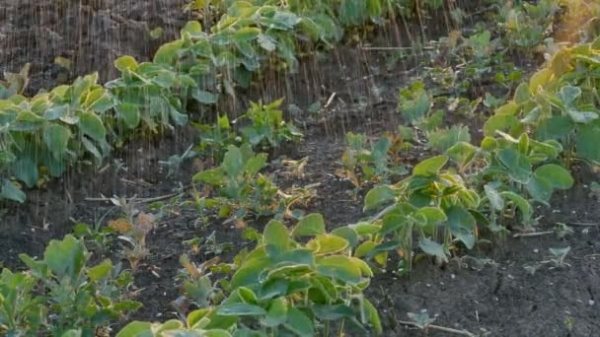

Features of feeding beans in the open field
During the growing season, the plant is fertilized 2-3 times. Before planting, humus is introduced into the bed, and the next feeding is carried out in the presence of the first pair of leaves. As a top dressing, phosphorus-potassium fertilizers are used in a ratio of 15-20 g per square of land.
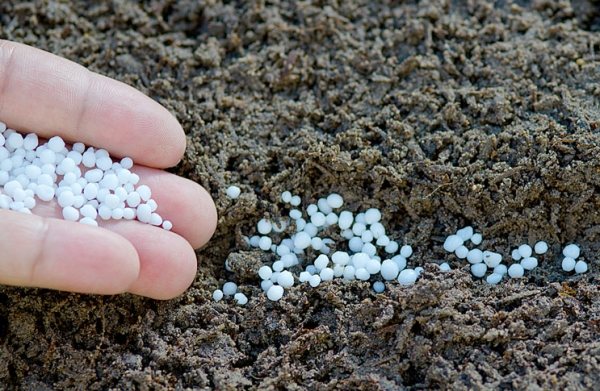

At the stage of mass budding, another fertilization is required. During this period, beans need an abundance of potassium, which can be replaced with wood ash if necessary. Final feeding is carried out at the ripening stage, one week before harvest.
Soil care
The soil on which the beans are grown does not need specific care, but to get a good harvest, you need to follow the basic agricultural techniques and take care of the land. It is enough to provide constant watering, loosen the soil and promptly eliminate weeds. In order to prevent increased growth of vegetation to the detriment of the formation of fruits, it is forbidden to fertilize the soil with nitrogen.
What and how to feed beans
The first feeding must be applied in the phase of appearance of true leaves and repeated twice a month. During the growing period, the plant needs organic fertilizers, but at home it is impossible to use the droppings and infusion of the mullein because of the unpleasant, pungent odor. There is only one way out - the regular addition of humus while mixing with the soil. The introduction of such dressings ends in the budding phase. Now beans require potassium and trace elements, the role of which will be played by wood ash. The earth is powdered from above, loosened and watered.
For feeding plants cultivated indoors, a natural odorless fertilizer has been developed - horse manure extract.


Harvesting and storage
The timing of the harvesting of beans directly depends on the type and variety of the grown crop. Asparagus beans should not be overexposed in the soil, since legumes in the dried state lose their beneficial properties. If you wish to preserve the crop, you can even harvest unripe fruits. Dried pods are suitable for winter harvesting.
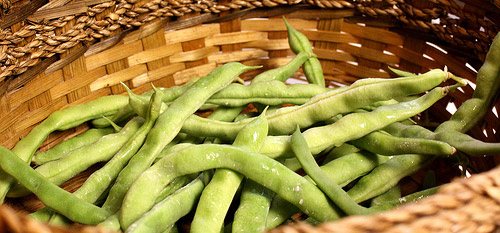

It is not recommended to harvest beans from all bushes at once if some of the pods are still green. In the shade of their own leaves, seedlings may develop more slowly, so it is better to leave them to ripen, which will help increase the yield of beans.As a rule, subject to the rules of cultivation, the moment when it is possible to harvest fruits without risk of disrupting an unripe crop occurs 2-2.5 months after planting.
It is recommended to store the crop in a dry and cool place. The beans can be folded into a canvas bag or glass containers. It is important that the crop is not exposed to direct sunlight. Beforehand, you should thoroughly dry the legumes to prevent rotting during long-term storage. If desired, the harvested crop can be frozen by dividing it in portions into several parts. This will allow you to always have a product at hand during the winter that will retain its original beneficial properties and taste.
Beans, planting and care in the open field
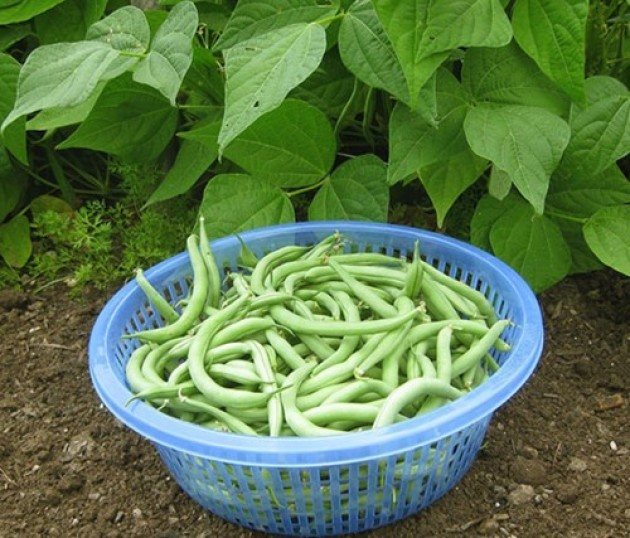

Beans are a plant of the legume family, which has been cultivated for more than 7000 years. The homeland of beans is considered to be the central and southern part of America. Beans are widespread throughout the world; they were brought to Russia from Turkey and France in the 16th century and were originally used only for decorative purposes. Only in the 18th century, beans began to be grown as a vegetable crop and consumed as food. Beans are an easily digestible, dietary product that is one of the ten most useful foods, so it is imperative to include them in your diet! There are many types and varieties of beans: bush, climbing forms of plants, which are successfully cultivated in our regions. During the flowering period, beans are a wonderful decoration for a garden plot or summer cottage; growing beans in the open field is easy and within the power of novice gardeners.
- Watering
- Storage
Description of beans
Beans belong to the fruiting annual herbaceous plants of the legume family (moths). The stem of the plant is powerful, depending on the species, it can be bushy or climbing. Bean flowers are moth flowers, grouped in clusters-inflorescences of white, pink-purple color - the decoration of the site during the flowering period of the plant. Beans are beans located inside the pod that ripens on the stem of the plant. The number of beans in a pod can be from 4 to 10 pieces, and the length of the pod, depending on the variety, can be from 5 cm (short-string beans) to 25 cm (long-string beans). Beans come in a variety of colors: white, gray, red, purple, variegated, and black.
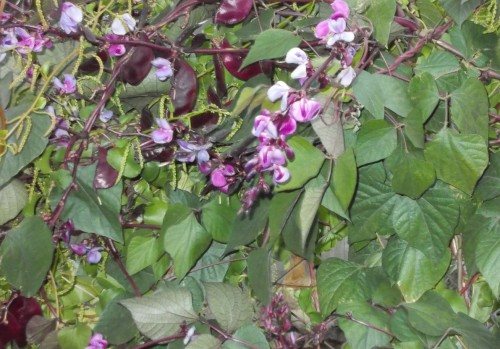

Types and varieties of beans
More than 250 types of beans are known, which differ both in the appearance of the plant, in taste, size, color of beans, as well as in the timing of their ripening.
According to the shape of the ground part, beans are:
- bush
- curly
Bush beans are an unpretentious, cold-resistant plant up to 60 cm high with early seed ripening. It is used for cultivation in the fields on an industrial scale, and is also successfully grown in summer cottages and garden plots.
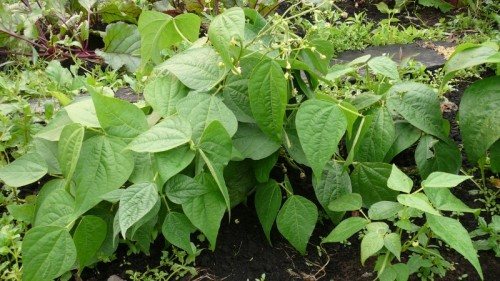

Curly bean varieties are high-yielding varieties with climbing vine-shaped stems, reaching heights of up to 5 meters. When growing them, a solid support or trellis is used. Just a few plants planted in a summer cottage can provide a high yield, as well as decorate the territory, as they look spectacular and are used for landscaping fences and outbuildings.


Types of green beans:
- Common beans (American). It is distributed all over the world, where it is used to prepare various dishes. Common bean pods have a cylindrical or flattened shape, with a pointed nose, their length reaches from 6 to 20 cm. The color of the pods can be different: green, variegated, yellow, white, purple. Also, the color of the beans can be different: from white, yellow, variegated to black.
- Red beans are oval-shaped beans of red color, slightly flattened on both sides. Dishes made from red beans are popular in the cuisines of Georgia, Armenia, India and Turkey.It is not used in its raw form, as it contains toxic substances that are destroyed by cooking. Recommended for use by people suffering from various diseases of the stomach, liver, with dietary nutrition.
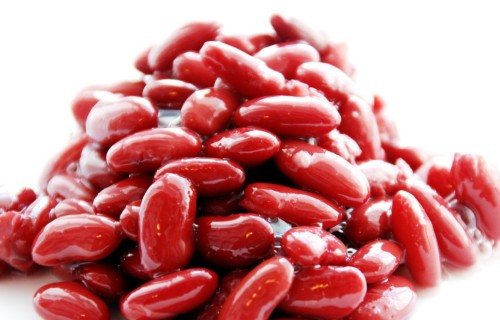

- White beans are an indispensable product in dietary nutrition, dishes from which have a high nutritional value. A variety of nutritious dishes are prepared from it: soups, sauces, side dishes. Beans go well with vegetables, herbs, they are used for preservation. In eastern countries, white beans are used to make flour, from which delicious pastries are baked and desserts are made.


- Black beans have many medicinal properties. Its use is recommended for heart diseases, improving brain activity. Due to their low calorie content, black beans are used to adjust weight and cleanse the body of toxins.


Among the varieties of American beans are:
- Green beans Crane. A productive bush variety, the height of which is no more than 50 cm. The pod length up to 15 cm has a green color, the beans are white, the shape is oval, the ripening time is up to 50 days from the beginning of the growing season.
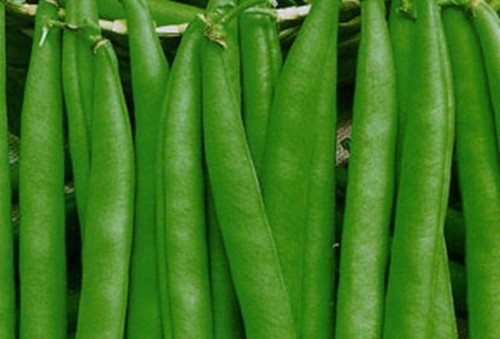

- Bluhilda: curly green beans. An early curly variety of green beans with a bright purple color. The variety has a high yield.
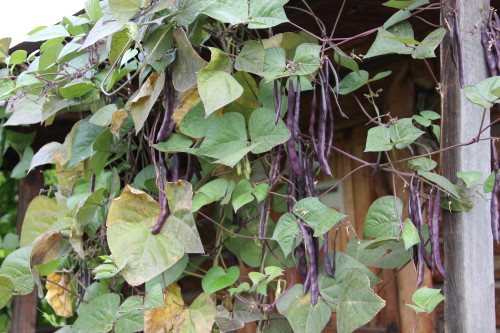

- The purple queen. A medium-ripening bush variety with dark purple pods up to 17 cm long. An unpretentious variety that tolerates both drought and cold weather well.


- Flamingo. A bushy variety with a beautiful variegated color of the pods, the beans have the same color. Differs in high yield and endurance, bushes can withstand a load of 50-60 beans.
- Blue Lake. An early ripe variety with green tender pods up to 16 cm long. The beans are small, the variety has a high yield.


- Enchantress. An early maturing bush variety, a distinctive feature of which is yellow pods up to 16 cm long with black glossy beans. Black beans are nutritious and healthy, they contain all the valuable substances necessary for the human body. Black beans are high in nutritional value, hardy and disease resistant.
Asian beans (Vigna or Vigna) - outwardly similar to common beans, but has a number of differences:
- Asian bean pods are thinner and much longer than common beans. Some varieties reach up to 1 meter.
- There is no parchment layer on the inside of the pod leaves
- The beans are small and do not require pre-soaking before boiling.
The genus of Asian beans includes mung bean, urd, adzuki beans, which are the most ancient plants. For many centuries they have been traditionally used as food by the peoples of India, Pakistan and other countries.
Among the famous varieties of Asian beans are:
- Vigna Liana green beans.
Climbing bean shoots grow rapidly and reach a length of up to 3 meters, needs support for cultivation. The pods are green, dense, without coarse fibers. The beans are small oval, brown in color.
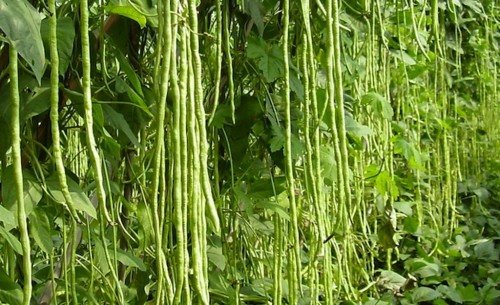

- Vigna Macaretti.
Curly beans are unpretentious in care, there are both green color of the pods, and red and purple. The length of the pods is up to 35 cm. The beans are small oval, brown in color. The variety has a high yield.
In addition, beans are classified according to their eating habits:
Asparagus (vegetable, sugar) - suitable for consumption as a whole, its valves are not covered with tough fibers and remain soft throughout the entire ripening period. The most famous varieties of asparagus beans:
- Sachs - early bush beans, the color of the beans is pink, the length of the pods is 12 cm, The bushes are low, their length is about 40 cm.
- Butter king is an early variety of twill beans with yellow pods up to 25 cm long.
- The melody is curly early.
- Fatima is a mid-season climbing variety of asparagus beans.
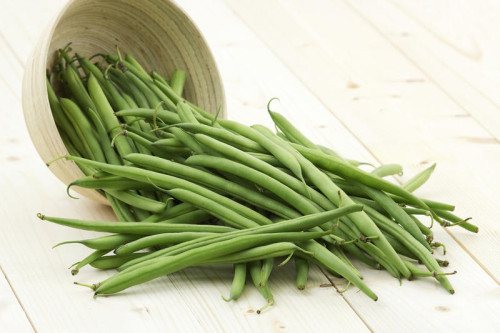

Shelling (sugar) - only beans are eaten, the name comes from the word "shell", since the beans are separated from the flaps. Perfectly preserves all the nutrients in the winter, soaked before cooking.
Famous varieties:
- Gribovskaya is a mid-season variety with green pods up to 15 cm.
- Shokoladnitsa is a drought-resistant honeycomb with brown beans.
- Swallow - the variety is distinguished by the original color of the beans in white with purple spots, resembling the outline of a swallow.
- The hostess's dream is large white beans.
- Ruby is a large red-purple bean.
- Golden - yellow beans.
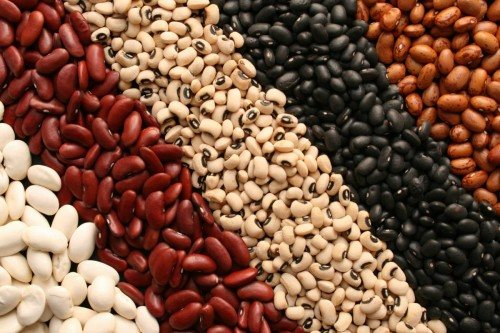

Semi-sugar - the middle option, when young tender beans are used for food whole, and after they are ripe - only beans.
Famous varieties:
- Second - the pods are small, yellow, 10 cm long.
- Indiana - red and white beans.
- Rant - green beans, pods up to 13 cm.
Planting beans in open ground
The beginning of planting beans in open ground is May, when the ground warms up to 15 degrees and the night spring frosts pass. It is worth noting that curly bean varieties are planted a week later than bush varieties.
Soil and seed preparation
Before planting, it is necessary to prepare the seeds, which must be sorted out and soaked in water overnight to swell. In the morning, just before planting, the seeds are dipped in a prepared boric solution (1 g per 5 l of water) to protect them from pests and diseases.
When growing beans, choose clay soils that allow water to pass more slowly because moisture can damage the plant. For planting, sunny areas protected from the wind are suitable, since beans are a photophilous plant. 2-3 days before sowing the seeds, the soil must be dug up, loosened with a rake so that it becomes loose. If the soil is viscous, it must be mixed with sand (for every square meter - 0.5 buckets of sand) and, if necessary, top dressing with wood ash, compost, vermicompost, rotted manure. The loosened, fertilized soil must be disinfected with a weak solution of potassium permanganate.
Landing
Beans are a thermophilic crop, so the southern and southeastern parts of the vegetable garden or orchard are ideal places for planting them. Ideal for growing beans are the beds where root crops, pumpkin seeds, and cabbage were grown last year. In the prepared area, it is necessary to make grooves or pits up to 5 cm deep and fill them with warm water. The distance between the holes should be 25-30 cm, and between the rows up to 30 cm. 5-6 beans are planted in the hole, when the first shoots appear, three strong seedlings are left, and the first shoots appear in a week. After planting from above, the seeds are sprinkled with soil and covered with sawdust with a layer of 0.5 cm.Then it is necessary to cover the area with a film, which is periodically removed to ventilate the soil. Beans are a heat-loving plant that needs protection from even small frosts. For climbing varieties, you can set up wooden pegs immediately after sowing or plant it along a fence or fence.
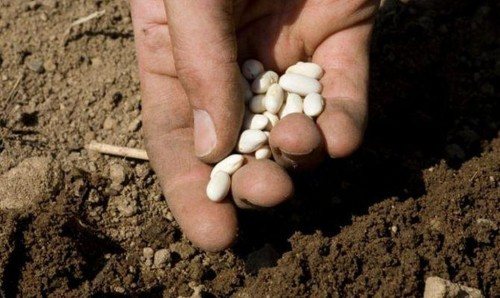

Bean care
To get a high yield, the beans should be regularly hilled, loosened the soil under the bush, fed, watered and tied the shoots to the support.
Watering
The beans are watered as the soil dries up - once a week. But, when 4-5 leaves appear, watering of the beans stops, since excess moisture will contribute to the active growth of the leaves, and not the ripening of the fruits. During the budding period, watering is resumed, since the soil must be well moistened. It is better to use rainwater or settled tap water for irrigation.
Soil loosening
With the appearance of the first young shoots of beans, it is necessary to loosen the soil, doing this very carefully so as not to harm the plant. Over time, as the plant grows, loosening the soil is combined with weeding.
Top dressing
After the appearance of the first leaves of beans, it is necessary to feed with superphosphate fertilizer (30-40 g per square meter), and during the budding period with potash fertilizer (10-15 g per square meter). When the beans are ripe, the beans can be fed with wood ash. It should be noted that the beans do not need nitrogen fertilizers, since the plant itself extracts nitrogen, and its excess provokes the active growth of foliage, reducing the yield of beans.
Bean garter
Curly bean varieties need a garter to support them. Fences, fences or trellises are used as support, along which the growing stems of the plant are directed. An important condition for installing a support for beans is that it must be wooden, since beans will not climb over a metal or plastic support. The support for the beans can be in the form of separate wooden stakes, 2-2.5 meters high, which go deep into the ground to a depth of 60 cm at a distance of up to a meter. Sprouts are tied to them, the stem is twisted on stakes counterclockwise. When the bush grows above the stakes, its tip is pinched and directed downward. The support can be made from stakes that are driven in at an angle and fastened from above, in the form of a hut or wigwam. The distance between the stakes is 1 meter, and between the row - 0.5 meters. Seeds are sown from the inside of the structure.
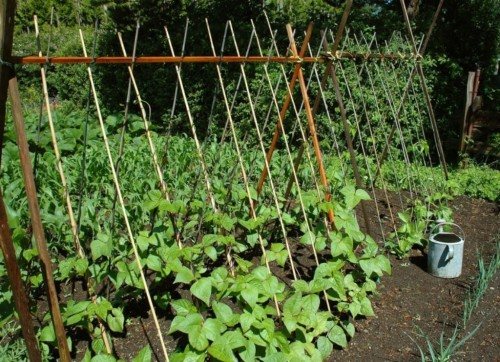

Also, a trellis with a stretched mesh with large cells is successfully used as a support.
Pests and diseases
Among the main pests of beans are:
- Cabbage and garden scoop, which lay eggs on the leaves and stems of the plant. Their larvae devour the ground part of the beans: castings, buds, young fruits. To protect the beans from the attack of harmful insects, the bushes are treated with bacterial preparations (1% Bitoxibacillin solution or 1.5% Gomelin solution).
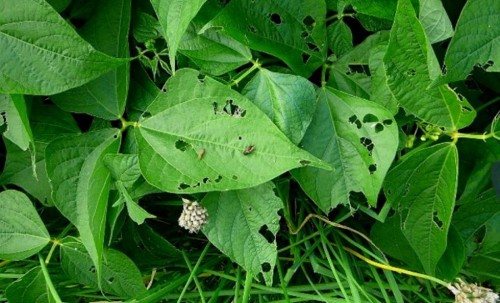

- A bean weevil is a bug that gets into the soil when a plant is planted and destroys the seed from the inside. To protect the seeds, they must be treated with a boric acid solution before planting.
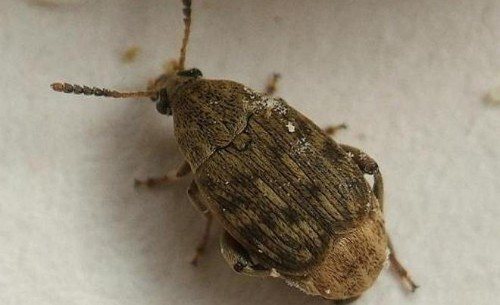

- Slugs - appear on excessively moist soils. The moisture content of the soil should be monitored, during the removal of weeds and the removal of pests.
Among the diseases that occur when growing beans, there are:
- Anthracnose is a viral disease that affects the leaves of a plant, which are covered with brown spots. To prevent disease, plants should be treated with a solution of Bordeaux liquid.


- White rot. The disease is characterized by softening and clarification of stems and leaves. To combat the disease, medicinal preparations are used.
- Bean mosaic. Casting plants are covered with variegated colors, reminiscent of a mosaic. The leaves look shriveled, the plant slows down and looks dwarf. The disease does not respond to treatment, it can only be prevented. The plant should be treated with Fitosporin when it reaches a height of 15 cm and after harvest.
When to harvest beans
Sugar and semi-sugar varieties of green beans are eaten whole. For this, young, newly formed pods are collected, which have hung on the stems for no more than a week. Harvesting is done in the morning, as green pods quickly wither and lose their attractive appearance.
Hulling beans are harvested when the beans are fully ripe. The harvest time is from July to September, sometimes October, when the leaves of the plant begin to dry out, and the appearance of the valves changes, acquiring the color characteristic of the ripening of the variety. Some varieties do not change the color of the pods after ripening. During harvest, the plant is uprooted and placed under a canopy, on a pre-laid foil or burlap, to preserve the spilled beans after the pods have opened. The beans are then peeled and removed from the pods.
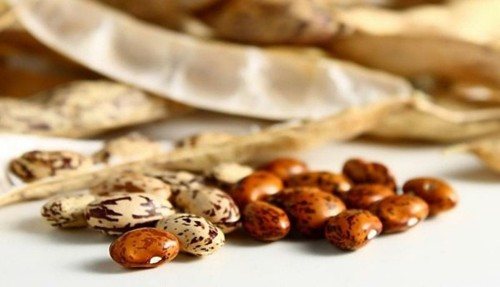

Storage
Green beans can be stored in the refrigerator for up to 10 days, and the beans should be frozen to store them for future use.Before freezing, the green beans are washed and cut into 2.5cm pieces. Before freezing, they are blanched, briefly dipped in boiling water, cooled and packed in bags or containers.
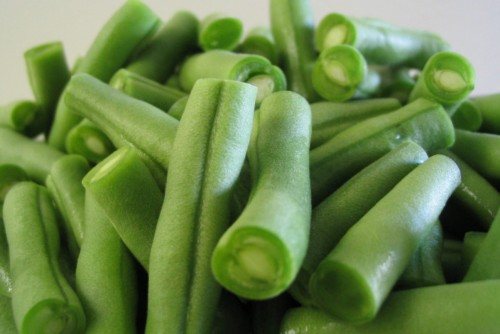

Beans should be dried, sorted and vacuum sealed before storage, such as a glass jar with a lid.
Beans are an ideal crop for growing in a summer cottage. Growing beans, caring for them does not require attention or special approach. A huge variety of species, varieties of beans allow you to choose a suitable high-yielding variety for planting in order to grow a healthy, tasty product. In addition to a high yield, climbing beans are an excellent plant for landscaping a site, garden or veranda.
Beans, photo
Diseases and pests
Beans are considered one of the few crops that are completely pest resistant. The only insects attacking plants are slugs. To prevent damage to beans by slugs, you need to weed the ground in a timely manner, without creating a favorable habitat for pests. If parasites are found, several traps should be placed next to the bushes.
The main diseases inherent in the culture are bacterial rot. Root rot affects plants in which the edges of the roots dry out, as a result of which growth stops, and the foliage falls off. When seedlings are diseased with powdery mildew, a white bloom appears on the surface of the leaves, which eventually spreads to all ground parts, and the plants die. To combat diseases, it is necessary to treat the landing site with insecticidal fertilizers.
Preparation of planting material


For planting legumes, choose hard, strong fruits without signs of mold. The surface should be smooth, glossy, with no signs of looseness or emptiness. Empty fruits are harvested after water treatments. The seeds are dipped into the water, the emerging specimens are thrown away.
Without soaking, the beans germinate for a long time, the hard shell does not allow the sprout to break through, they can die in the cold ground. Therefore, the fruits are soaked in a damp cloth.
Bean seed germination methods:
- Before sprouting, the beans are placed in a warm manganese solution for 15 minutes. The water should be 70 degrees. After the procedure, seeds are immediately planted in the ground and the ground is watered with this solution.
- Manganese is diluted in water, heated to 60 degrees, the prepared soil is poured with a solution and beans are immediately planted.
- You can leave the beans for further germination in a humid environment. The cloth, gauze, cotton wool are moistened, the seeds are spread on top, left in a warm place (+ 25 * C) for 2 days. Water is periodically added, it must be at least 24 degrees. You can add a growth stimulator Zircon, Epin, Energen.
Bean pests
- The caryopsis is a malicious bean pest.
The female of this pest is very fertile. She can lay up to 50 eggs. Up to 30 larvae can develop in one bean.
The pest does not tolerate subzero temperatures!
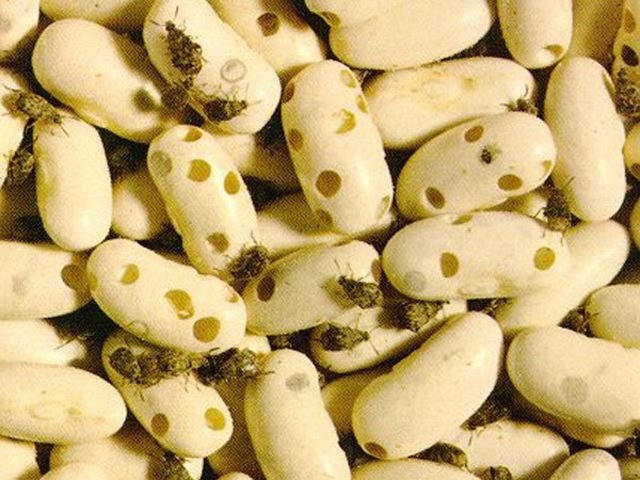

Caryopsis - a pest of beans
- Sprout fly
The length of the insect is no more than 5 mm with three dark stripes on the back. Fly larvae damage germinating seeds, which rot and do not germinate.
Cool weather is a good breeding ground for the sprout fly.
- Slugs
These pests eat young bean leaves, and they will not give up on young beans.
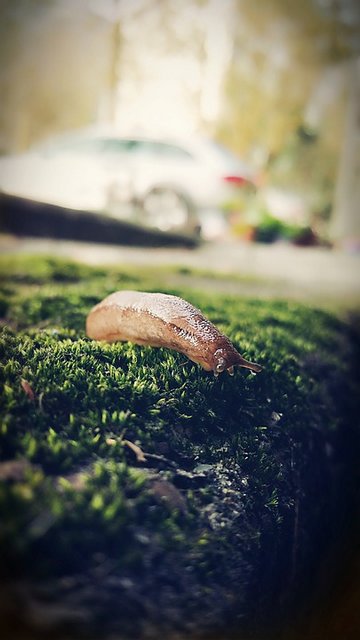

Slugs are pests of beans
Choosing a place for planting beans
Illumination
Choose a well-lit place for cultivating beans, avoid drafts and strong winds. Young, immature shoots are very sensitive to this. Beans are often sown along fences, under apple trees.
Soil composition
Clay soils are contraindicated, since they do not allow water and air to pass through well, and the roots of the plant do not tolerate dampness (they will simply rot). Loose soils with a nutritious top layer are best.
Predecessors
Take into account the crops that were previously grown on the site.Excellent predecessors are carrots, potatoes, cucumber, peppers, tomatoes, eggplant.
Features of the structure, growth and development
Beans are a vegetable in the legume family. Surprisingly, this vegetable has so many varieties and varieties. The size and color of the bean depends on the particular variety. All varieties of beans are divided into three groups:
- Asparagus varieties (sugar);
- Universal varieties (semi-sugar);
- Grain varieties (shelling).
Asparagus or sugar varieties - do not have a dense structure and fibrous layer. These types of beans are more often grown for human consumption. Sugar beans are considered the most delicious, as they are harvested at the stage of its technical maturity. The pods have already grown to the length inherent for the variety, and the beans are soft and tender inside. These beans are usually small in size.
Semi-sugar varieties are also eaten and used as seeds, therefore they are considered universal. They usually produce denser pods and slightly larger beans.
REFERENCE: The great advantage of this vegetable is self-pollination. You can safely grow several varieties side by side and be calm - they do not become over-pollinated.
Shell beans are often grown for grain. These beans are large to medium in size. When the beans of these varieties reach their maximum size, their pods dry out and peel very easily. Mature pods are yellow, white, purple, green, and also have specks and streaks.
According to the shape of the plant, beans are divided into: bush and curly.
Bush beans less whimsical in cultivation and more convenient for manual harvesting. These bean varieties begin to bear fruit and ripen earlier. The height of the bushes reaches from 40 to 60 centimeters.
Curly beans can hover up to five meters in height. For such a vegetable, special supports are needed. Regardless of the type of beans, sometimes it is used for decorative purposes - for landscaping fences, walls and other surfaces.
Bean compatibility with other plants when planting
There are quite a few plants with which you can plant beans next to them. She is friendly with radishes, corn, celery, cucumbers, potatoes, tomatoes, beets, spinach and all types of cabbage. In the vicinity of these cultures, mutual stimulation is noted. And also good compatibility is observed with carrots, radishes, cucumbers, pumpkin, lettuce and strawberries.
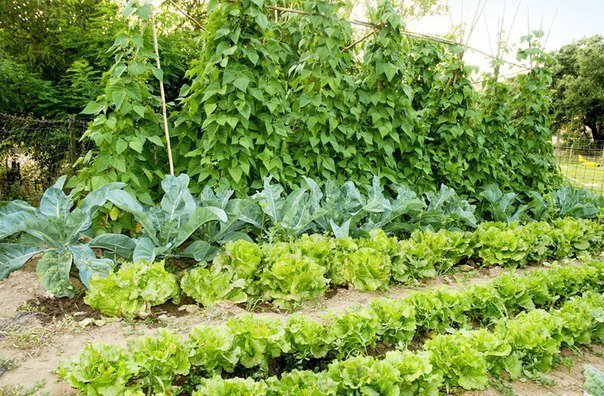

Beans get along well with many cultures.
There are significantly fewer crops, the neighborhood with which is undesirable for beans. Planting beans next to onions, garlic, fennel and peas is not recommended.
The most popular varieties for planting
Varietal diversity complicates the choice. If there are difficulties in determining the range, it is recommended to give preference to proven varieties that are adapted to the climate and weather conditions of the region.
The best varieties for the Moscow region, Ukraine and Belarus
Moscow white green-pod 556
Plant mid-early ripening period, from sowing to harvesting 100 days... The bush is formed at a height of only 25 cm, the fruits have a parchment layer, but very thin. The culture is unpretentious, resistant to a humid environment and drought.
Curly variety mid-early ripening. The egg-shaped bob is ocher in color with a pale purple pattern. The fruit is free of parchment and fibers, which makes the structure tender and soft. The plant is tolerant to anthracnose, gray rot.
For the Urals and the middle lane
She R - early maturing ripening beans 80-90 days, recommended to plant in a country house in central Russia. The height of the bushes is from 35 to 56 cm, the fruits are distinguished by high taste.
Harvesting begins in 65-85 days after seed germination. The climbing bush reaches a height of up to 3 m, so it needs support.
The marbled pink beans are free of parchment and fibers, which gives them a delicate texture. Purple streaks and streaks are visible on the fruit.The application is universal, in any form the beans retain their unique taste.
For Siberia
Winner
Culture is different high yield and the nutritional qualities of the fruit. The length of the pods is about 30 cm, the beans are large. Cold resistance and strong immunity make it possible to cultivate and grow a plant in Siberia.
Feature: lashes with beautiful fiery red flowers can be used as a decorative hedge.
Oil king
Bush type of beans with a ripening period 1.5 months... Delicate and pleasant taste of tubular fruits will not leave indifferent any gourmet. The length of the pod part is about 25 cm. The use of the crop is universal: dry harvesting, freezing, canning.
Hello dear readers!
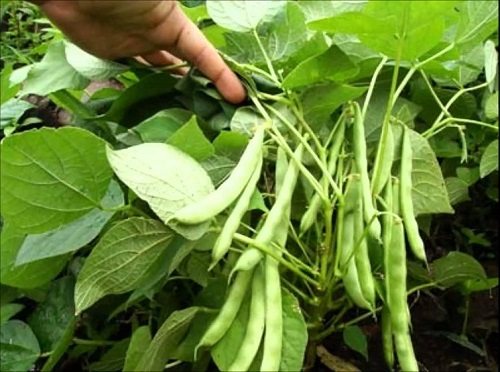

We have already got acquainted with various types of beans, learned about how amazing this plant is.
Now let's talk about growing beans, what they need in the growth process.
If you know in advance in what conditions she likes to grow, then growing beans will not give you much trouble.
Delicious, beautiful in bloom, healthy beans, this is obtained by investing labor in its cultivation.
The first step is to study: how to provide the future "vegetable meat" in the growth period. So that later the beans provide food for the owners who grew it.
The first day
The first day passed. There are no visible changes in sample # 1. The beans in sample # 2 increased in size up to two centimeters, the color became paler. In sample # 3, beans also increased in size. On the side in contact with the damp cotton wool, the beans swelled more and the color became pale, as in the 2nd sample.
We cut the beans from the 3rd sample and immediately noticed that the root of the embryo became thicker and the leaves increased in size. The bean skin is softer.
How to awaken the seeds
When buying planting material, be sure to look at what species the plant belongs to. Asparagus varieties will give you young pods, while hulling only seeds. In any case, the beans must be soaked before planting, otherwise they will not hatch for a long time. When the summer is short, pay attention to the timing of fruit ripening. Try to purchase localized varieties of local breeding that are more hardy, they do not require special care.
Landing times depend on the weather. In order for the beans to sprout, the earth must warm up to + 15ние, the spring frosts must end. In the southern regions, they begin to plant when the chestnut blooms, and in areas where this tree does not grow, you will have to navigate by the weather forecast and your own intuition. First, put the beans of erect varieties in the ground, after a week it will be the turn of climbing plants. If the summer is warm and long enough, bush beans can be planted in July in the beds where early vegetables and greens grew before.
Go through the seeds, put aside all rotten, damaged, deformed ones. They must be soaked in the evening and kept in water all night. In the morning, select those that are not swollen, and hold the rest for a few minutes in a solution of boric acid (dilute 1 g of powder in 5 liters of water). With this treatment, before planting, the plants will not be afraid of diseases and pests.


For the Urals and the middle lane
Oran
Early-ripening beans with a ripening period of about 3 months. Ideal for growing in central Russia. The height of the bush is 35-56 cm. It pleases with fruits with excellent taste characteristics. About 200 g of fruit can be harvested from 1 m 2.
Pink
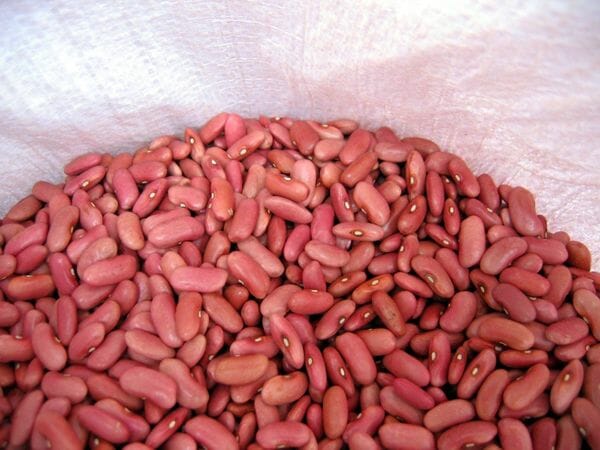

Pink
From the moment the seeds appear until the harvest, it takes about 2-3 months. The climbing bush grows up to 3 m in length, and therefore needs support.
The fruits have a marbled pink hue, are devoid of a parchment layer and fibers, due to which they have a delicate pulp. The beans have purple streaks and streaks.
Sowing beans


Sowing dates... The beans are sown taking into account their heat-loving nature.She, of course, can swell and wake up already at + 10 °.
In the soil, next to the seed, so that there is - such. But these are far from optimal heat conditions for the culture.
At low temperatures, the weather is usually still unstable, it can suddenly get colder. Such a turn to the cold can not only stop growth, but generally destroy the beans not even at the root, but only those that are about to germinate.
Sprouted beans are especially sensitive to a lack of heat. If you germinate - only in such a way that the sowing falls at the time of optimum temperatures.
In the South, it is easier: the chestnut has bloomed, which means that the soil is just ready for sowing beans. Its temperature in the planting layer is above 10 °. The indicator is correct, the chestnut will not be mistaken.
To the north, you need to look closely at the state of the native plants, when the temperature is suitable for sowing beans.
Each region has its own characteristics. If forecasters report: average daily temperatures in the region are 15 degrees or higher - planting beans can start.
It is good if it is possible to cover seedlings with a temporary film frame. Frosts are unpredictable even in the South (they happen occasionally in June), and beans cannot withstand such weather.
April - May are the months for sowing beans, only the numbers are shifted, adjusted for the terrain.
How to sow beans... The beans are sown either dry - if there is no confidence in the irreversibility of cold weather, or you can soak them overnight before sowing.
The second option, when a steady heat is established, rains fall and it is possible to keep the soil moist on the plot (water it).
There is more - the desire of the grower plays a role in the choice: to soak or not.
- Bean seeds are not small, they are not sown superficially. Otherwise, they can ascend, but it is unlikely to hold firmly in the ground. Wind or rain will easily lay down finely planted beans. It is customary to sow to a depth of a matchbox - 5 cm.
- The planting scheme is chosen according to the capabilities of the site. The minimum for bush forms is 30 by 40 cm (distances in rows and aisles). There is an opportunity to give more food area - give it, it won't get worse. It is good if the sowing of beans is carried out by making the holes in a checkerboard pattern. This will provide better lighting and nutrition. Place two to three seeds in the hole. This is insurance. When they rise and are strong, thin out. The best will remain. If everything is good, you can leave two plants (just sow not side by side, distribute over the hole), the third one can be carefully transplanted, like seedlings. Or transplant two, leaving one in the hole. When there are plenty of seeds, you can sow five at a time. Especially curly - after her, from one hole along the trellis, you can send branches of two plants at once - in different directions.
- Dry seeds can be planted in moist soil without watering if the humidity is low. In case of high humidity or sowing with paved / germinated seeds, sprinkle the hole with earth, wate it after gently pressing the earth against the seeds. You can press it with a hoe plane or even with your hands. Sprinkle a little with unspilled earth on top - to insure against the crust.
- Plants of climbing forms are more powerful, they are planted with half-meter spacing, at the same distance as bush forms of beans, a distance of 30 cm. High (two-meter) supports are harvested in advance. Beans will easily cover any, but it is better to choose wooden ones. They do not glow from the sun like metals or polymers. Although in terms of durability, the tree is inferior to them. But the stalks of the bean plant are sparing.
- If corn or sunflowers are also sown on the site, curly beans can be planted with them in one hole. It is impossible to come up with more environmentally friendly support. These cultures are friendly and are often grown together. The planting is compacted, the harvest is double (seeds and beans), the benefits are obvious. And there is less maintenance: no work with supports.
Are beans afraid of frost
Beans are a thermophilic culture, so planting is best done in spring. in the second half of Maywhen the threat of frost has passed.Young shoots are afraid even of cold winds, which is why many gardeners find its place under apple trees or along the fence.
The minimum temperature that bean sprouts can withstand does not exceed the mark -3-4 degrees... If the frosts were short-lived, the beans will survive, but their development will be slowed down and yields will decrease.
Agrotextile or film, which are used for construction, will help to change the situation. temporary shelter.
Preparing beans for planting
Planting beans can be done:
seeds:
- dry
- soaked
before planting, we leave the seeds in a solution of potassium permanganate for half an hour. After that, we rinse the seeds with water and proceed to planting.
- sprouted
You can use sawdust to get germinated seeds.
If you don't have a sawmill nearby, pet store sawdust is fine.
Important!
Before using the sawdust, fill it with boiling water and leave it until the water cools down. We drain the water, squeeze the sawdust.
seedlings
Seedlings can be grown:
- In the ground using cups.
- Without land.
This method is convenient because growing seedlings, in contrast to the traditional method - growing in cups with soil, does not require a lot of space.
You can grow beans using a "diaper". Seeds germinate in 4-5 days. When planting, we deepen the plant to the cotyledon.
How to choose beans seeds for planting
Before planting, be sure to check the seeds. We remove the seed, in which there is a black dot, similar to the fact that someone bit into the seed. It is possible that this seed is infected with a caryopsis.
The shelf life of beans seeds is 5-6 years.
Important!
The longer the seeds lie, the less their germination.
Planting corn and beans together
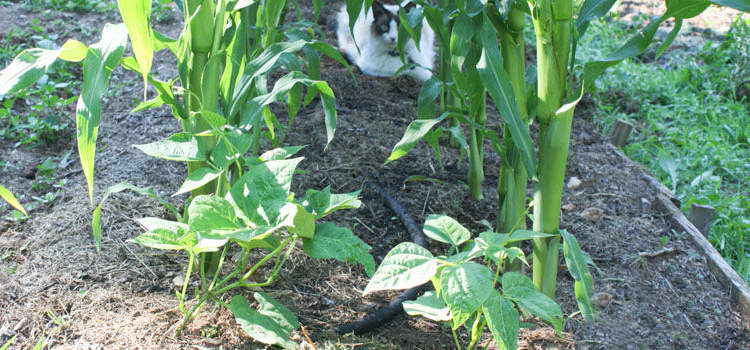

Corn with beans planting and care photos
Climbing beans are often grown in conjunction with corn. Landing is done under a hoe: shallow holes are made with a hoe, shoveling the earth in one direction, throw 2 corn seeds and 2-3 beans each, rake the hole with your foot and move on. The distance between the rows is 0.7 m, in the row between the holes - 30-40 cm.
Further care of the plants is simple: timely weeding, if it is in the steppe. If at home, you can water occasionally to get a rich harvest.
Then you can plant beans.
Compliance with the rules of crop rotation is important for growing any crop, including beans. It is recommended to plant it after cucumbers, tomatoes, potatoes, cabbage, carrots, strawberries, beets, radishes, corn, hot and sweet peppers.
There are much fewer bad predecessors for this culture. They will be peas, beans, lentils, soybeans, peanuts. Also, beans cannot be re-grown in one place for 3-4 years.
The process of planting beans is simple, it will be understandable and accessible even to a novice gardener. And even experienced ones know even more that it is very important to take into account all the conditions and rules when planting a crop - this is the key to the full development and productivity of plants. It is not difficult to fulfill the requirements, and the beans will delight the eye with their decorative bushes and will thank you with a good harvest.
For Siberia
Winner
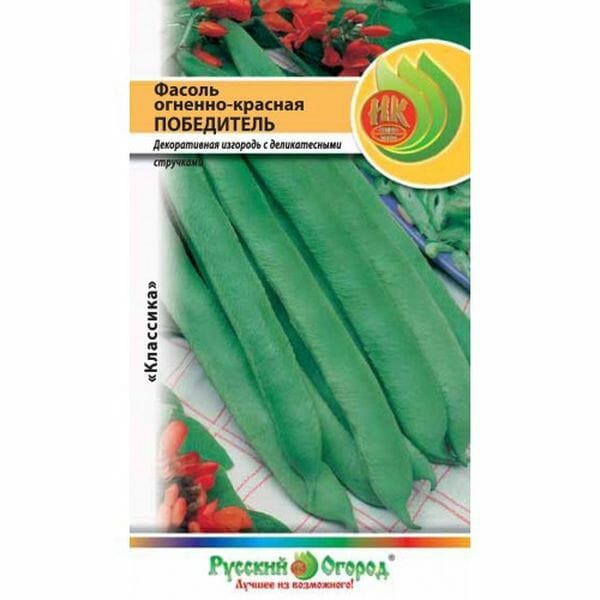

Winner
This variety is characterized by high yield and nutritional value. The pods are up to 30 cm long. The fruits are large in size. The culture can withstand cold weather and has a strong immune system. Due to these qualities, it is permissible to grow it in the harsh climatic conditions of Siberia. Scourge plants have bright red flowers, so they can be adapted to create a decorative hedge.
Oil king


This bush bean variety takes 45 days to mature. The fruit has a tubular shape and excellent taste. The length of the pod part is 25 cm. The harvested beans can be stored frozen, dry and canned.
Second day
The second day passed. We did not see any big changes. 1st sample hasn't changed at all. 2nd and 3rd samples increased slightly.The water is slightly pinkish from the bean peel dye. We cut the beans from the 3rd sample. The root of the embryo became a little larger and, after cutting the peel, began to stick out a little to the side.
Part II: Preparation
Our experiment doesn't end there. Now we have to find out what conditions are necessary for a young sprout to turn into a full-fledged plant. For this, we selected sprouted beans from the third sample. We divided them into three groups. The first group, together with the largest sprout, we placed in a glass jar, so as to observe the growth of the root through the side wall. We will put this sample in a warm and bright place. Place the second group next to the first, but cover it with a lid, i.e. deprive the sun's rays of access. Place the third group in a sunny place, but on a cold windowsill, i.e. in a place where the heat is less than that of the first and second samples. We will observe which of the groups of seeds will develop better.
Table: features of the preparation of seedlings and sowing beans in the ground in different regions
| Region | Features of the preparation and planting of seedlings and beans |
| South | Preferred varieties: late ripening (Beauty of Kentucky, Dita, Tara, Gama, etc.). If you are planting seedlings or sowing beans in June, then make sure that the daylight hours lasts no more than 12 hours. Shade the plants as needed. You can place beans between tall crops such as grapes to reduce the amount of light. Sowing time: in the ground - the second half of April, for seedlings - the second half of March. |
| Middle lane | Preferred varieties: early ripening (Oil King, Saksa 615, Nagano, Flat Long, Gardener, Golden Nectar, etc.) and mid-ripening (Moscow White Green Pod 556, Winner, Fatima, Violet, Pink, etc.). Sowing time: in the ground - mid-end of May, for seedlings - the second half - end of April. |
| Ural | Preferred varieties: early maturing. Sowing time: in the ground - the end of May (on warm beds - in the first half of May), for seedlings - mid-April. If a cold snap is expected, then young shoots need to provide shelter. |
| Siberia | Preferred varieties: early maturing. Sowing time: in the ground - early June (on warm beds - in the second half of May), for seedlings - early May. If you are planting beans in the ground, it is best not to soak or germinate them. If a cold snap is expected, then young shoots need to provide shelter. |
As you can see, growing bean seedlings or sowing beans on it is not difficult, and even beginners can handle it. By following the recommendations for preparing and caring for seedlings and choosing the right site for its further cultivation or sowing beans, you can easily get a healthy plant and ensure a high-quality harvest.
Seventh day
The first part of our experiment has come to an end. The first sample, which was warm but without water, never germinated. The second sample, which was completely submerged in water, increased in size, but did not release a single sprout and the water deteriorated. And only in the third sample, which was lying on a damp cotton wool, beans sprouted, and one especially strongly grew and even released lateral roots.
conclusions
As a result of our experiment, we saw that some of the seeds that simply lay in the light remained unchanged. Those that lay in the water did not sprout, but died. Those seeds, which on a cotton wool moistened with water, gave early and friendly shoots. Thus, we made a conclusion about the need for water, air, heat for the development of the seed. While working on the project, we learned how the seed works. It consists of the seed coat, cotyledons, and embryo. The seed coat protects the seed from damage and drying out. The cotyledons contain nutrients for the embryo. And the embryo gives life to a new plant.
Day four
In the third sample, two more beans have hatched! Yesterday's roots have greatly increased in size, the peel around them began to break. The first and second samples are still without visible changes.
Harvesting
Two weeks after the beginning of flowering, you can start harvesting. Collect the pods every two days, cutting with scissors is the most convenient method.
The harvest time also depends on the form in which you want to use the beans.
Harvest beans for grain as follows:
- Make sure the grains are hard and dense, most pods and leaves are dry;
- Cut the bushes at the root, form small bunches and hang them in the attic or other dry room to dry the rest of the pods;
- After two weeks, you can half-fry the beans or grind them with a stick. To do this, take a blanket, lay out the bundles of beans, cover with a blanket on top and boldly thresh;
- Sift grain outdoors and store.
ATTENTION: Harvest only in the morning, until the pods are saturated with the night's moisture.
Watering rules and conditions
Beans love abundant watering, so this procedure must be carried out in a timely manner. Moistening the soil is especially important during the period when pods are forming.
The amount of water per bush is determined by eye. You need to water the legume culture once every 7 days. It is important to exclude drying out of the soil. The best watering fluid is rainfall. It is also recommended to use settled water, the temperature of which is at least 18 degrees.
Beans love water, so the soil should not be allowed to dry out.
We increase the yield of beans
The main advantage in the cultivation of beans is its simplicity. Light-loving plant, suffers in darkened areas and swampy soils. Therefore, choosing the right site for beans will be the first step to increasing the yield.
The choice of the predecessor is also not important. Beans should not be sown after legumes. The plant gives a high yield on light and fertile soils. Therefore, it is very important to fertilize the crop during the growing season. Before planting, compost and mineral fertilizers are applied, then feeding is repeated during flowering and pod formation.
Sowing for the convenience of the gardener can be done in different ways. Beans do not disdain bulk beds and just holes in the ground, it is enough to provide the plant with warm soil and moisture and it will grow. On light soils, the seeding depth varies from five centimeters. On heavy loam, three centimeters.
For the convenience of the gardener and in order to avoid lodging, decay - curly beans must be tied up and thrown over specially installed supports. Shoots must be protected from weeds, manual weeding is required. Hilling will help the plant grow stronger and saturate the soil with oxygen. For the development of the root system, legumes are watered with a bio-solution, which includes nitrogen-retaining bacteria, which are so necessary for bean nodules. Microaerophiles are very important for legumes. They decompose some harmful chlorine-containing compounds, participate in the "capture" of nitrogen, and also synthesize phytohormones that contribute to the rapid growth of the plant.
Follow the schedule of watering, weeding and feeding, protect the seedlings from pests, and the bean crop will delight you in two months.
Second day
Yesterday, when we photographed the first sample, a tiny edge of a bean was visible to the honey with lumps of earth. And tonight on this place a sprout 8 cm high has grown! This is amazing! Such progress in just one daylight! The first pair of leaves is well formed and ready to open. The cotyledons began to shrink. In the second and third samples, the beans barely emerged from the ground. The development of shoots is lagging behind.
Part I: Preparation
For the experiment, we selected red bean seeds to see how the color of the seeds would change during germination.We measured the beans and looked inside 

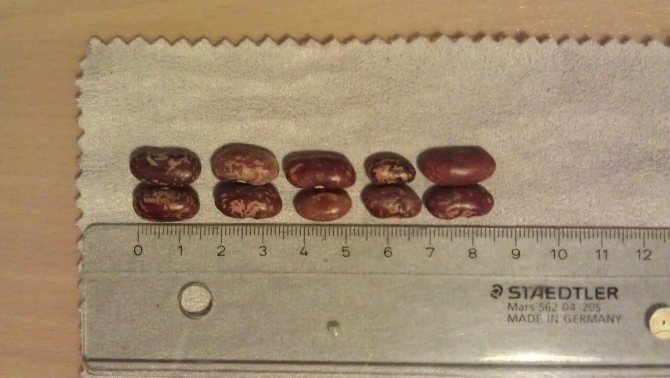

The beans bought at the nearest store turned out to be about the same size, about one and a half centimeters. Each of them can be split into two halves - the cotyledons are the nutrients for the future sprout until it gets stronger. The photo shows the embryo of a plant with a couple of leaves. The cotyledons and the embryo are closed with a dense shell. The inside of the cotyledon is the same color for both white and colored beans. Only the color of the shell and the size of the beans differ.
In the experiment, we will have three samples: Sample 1 - will just lie in the light and warm. Sample 2 - will lie in a glass of water. Sample 3 - will lie on a cotton wool moistened with water. Thus, we will find out which conditions are best for the germination of beans.
Day three
The third day has passed. And we have two beans in the third sample! The first and second samples are still without visible changes.



